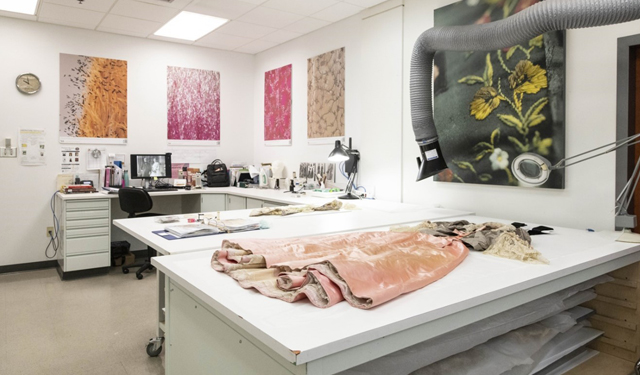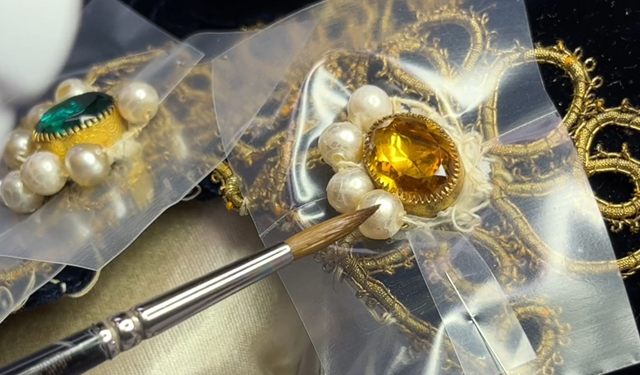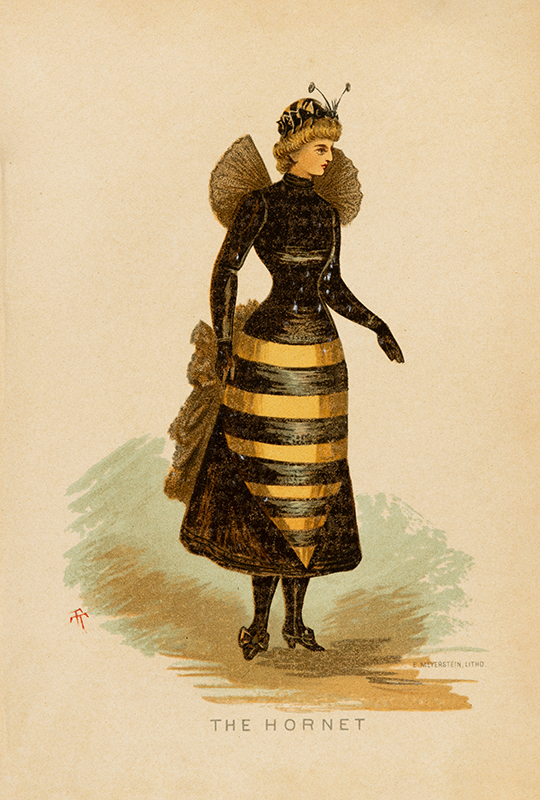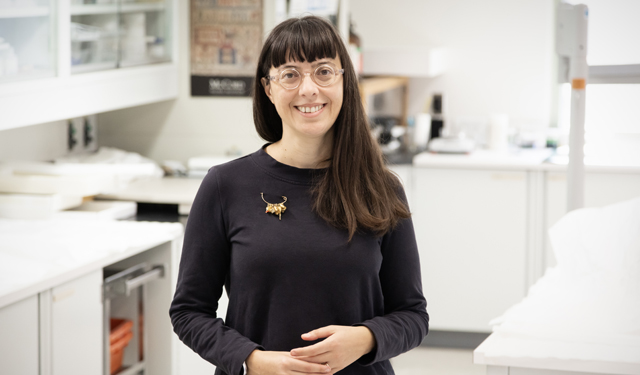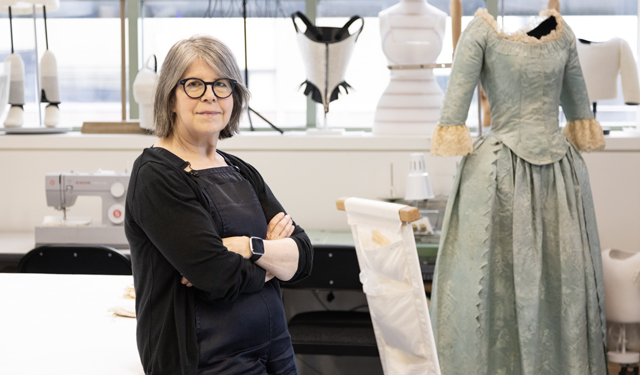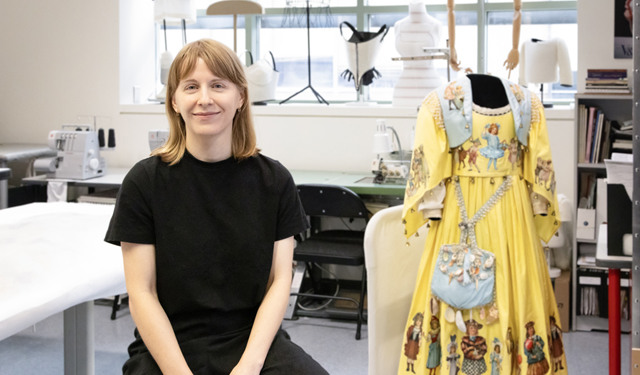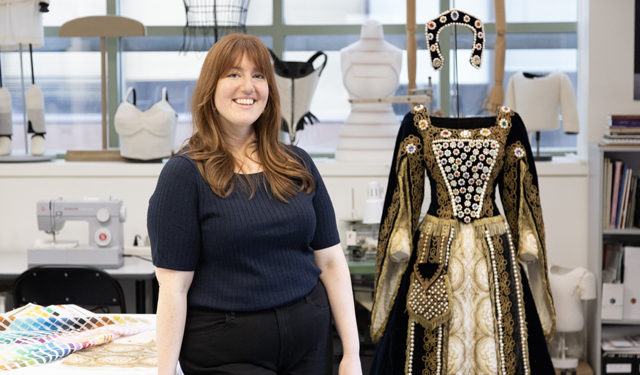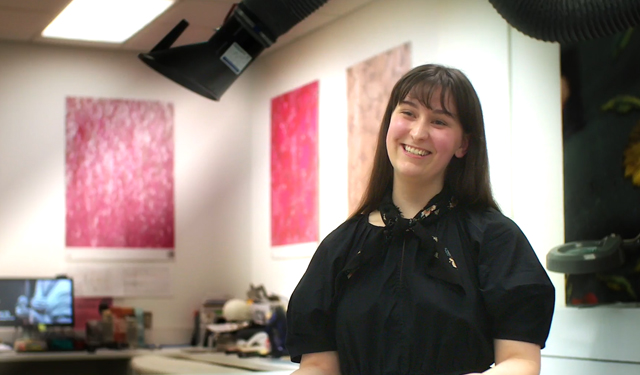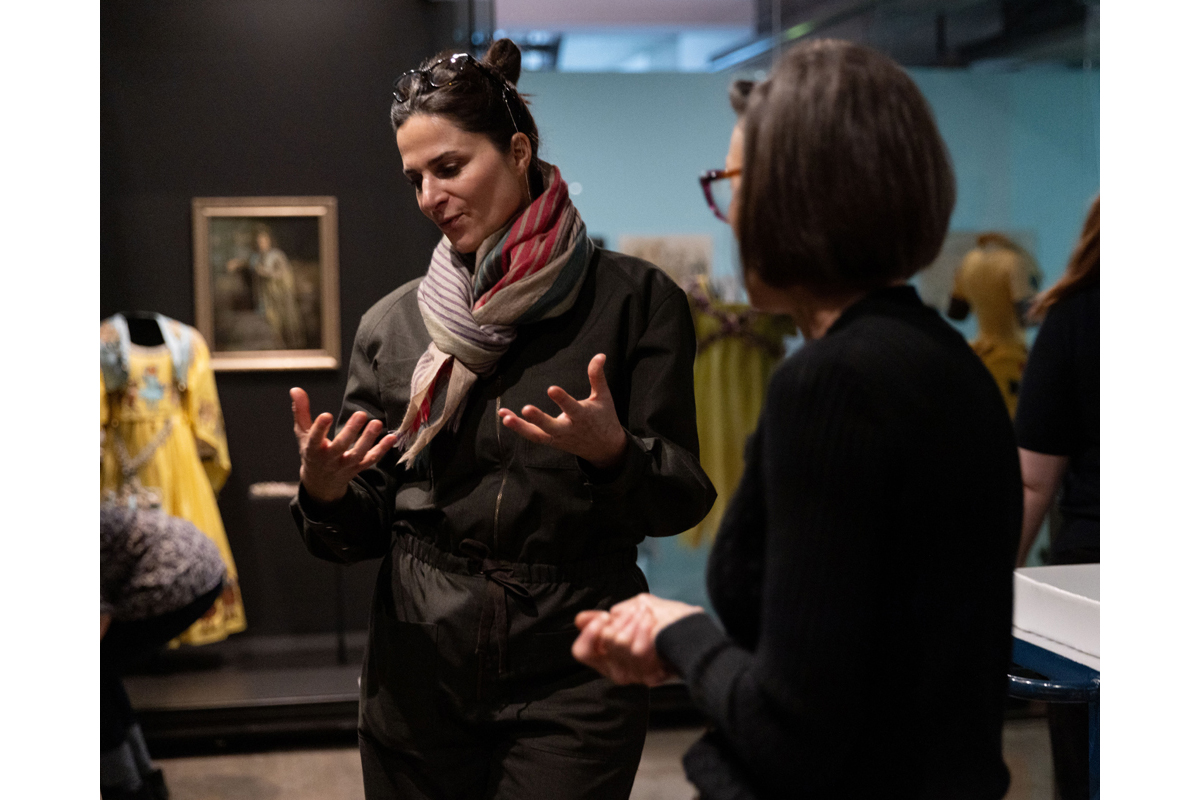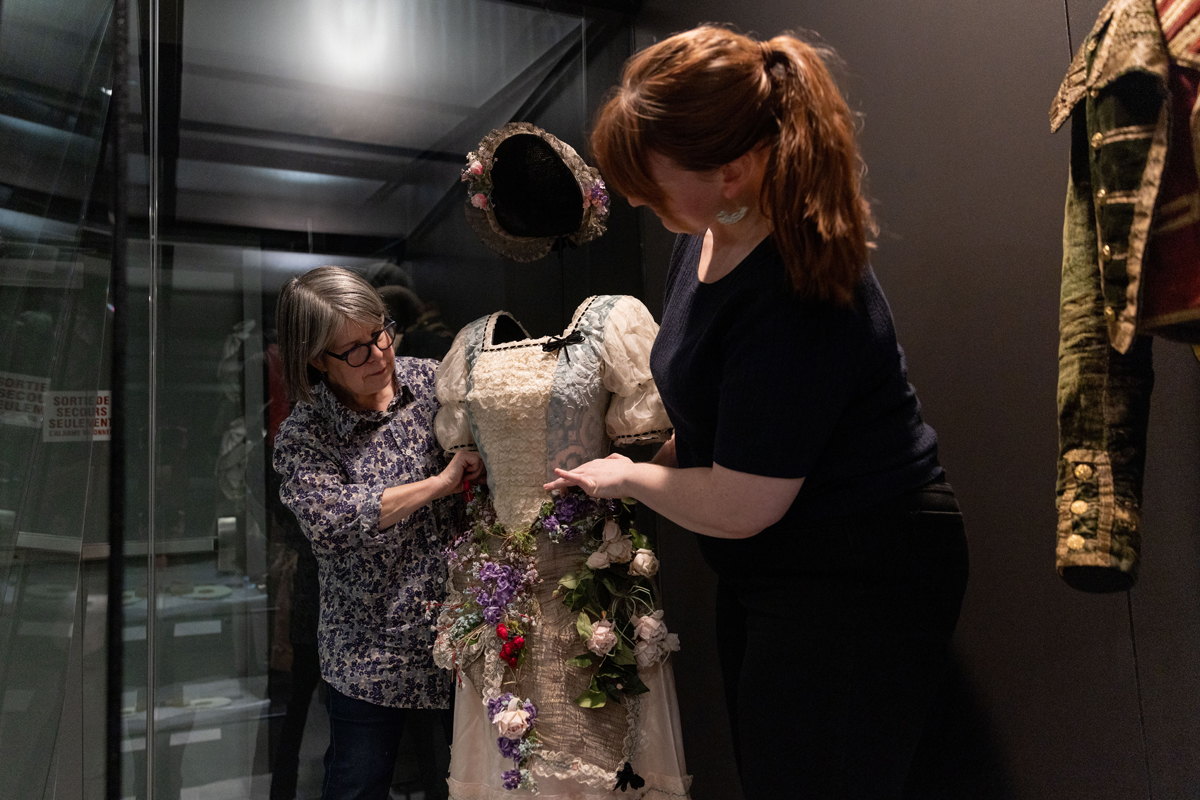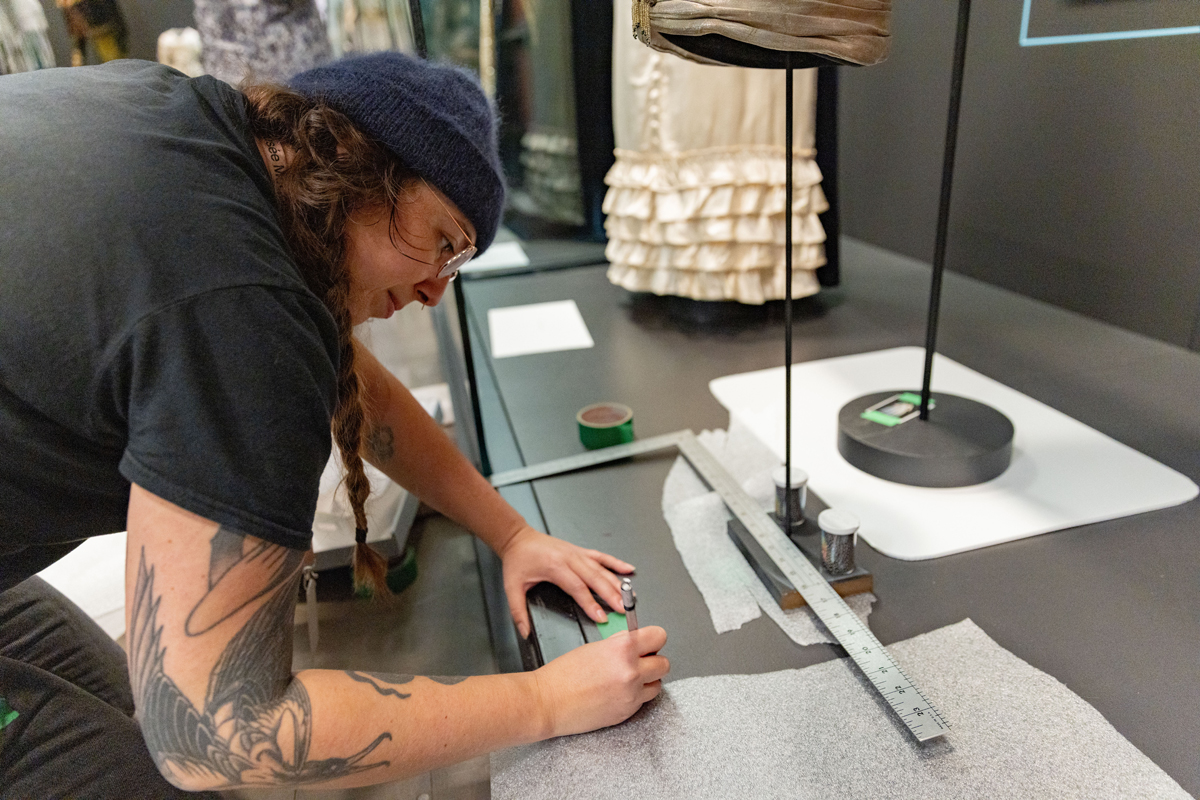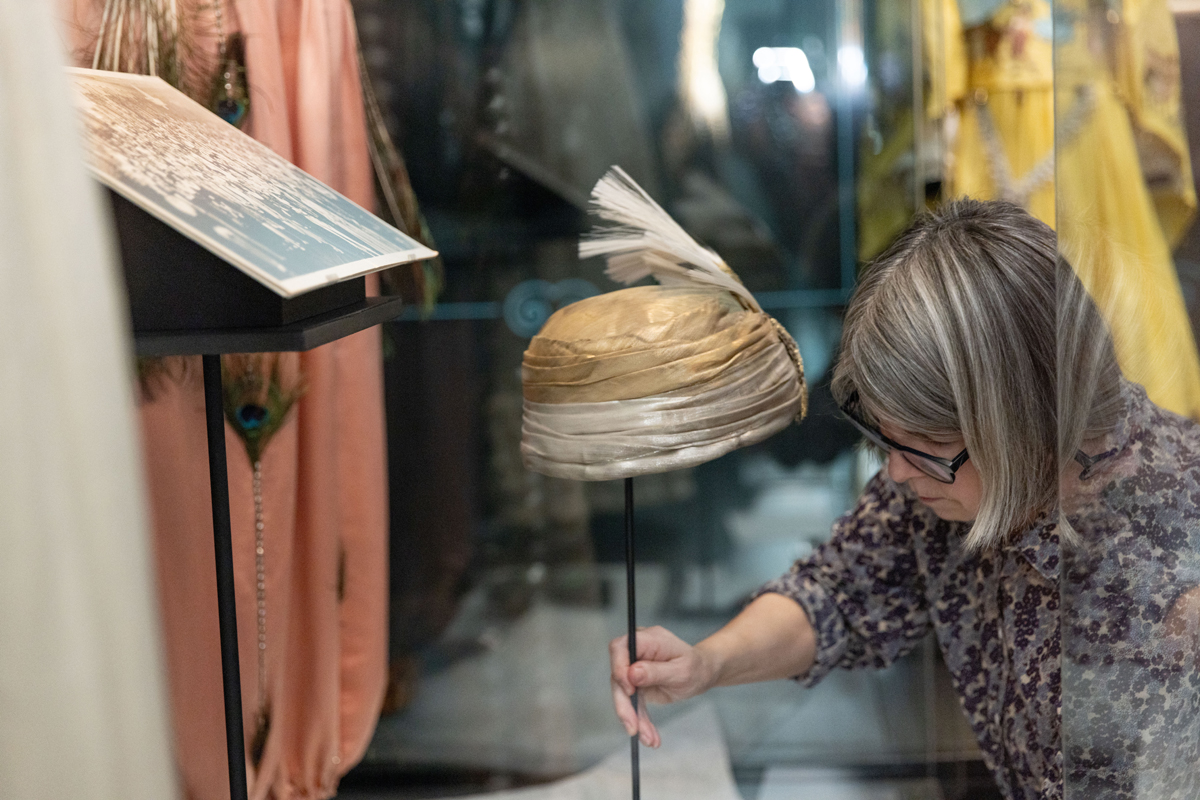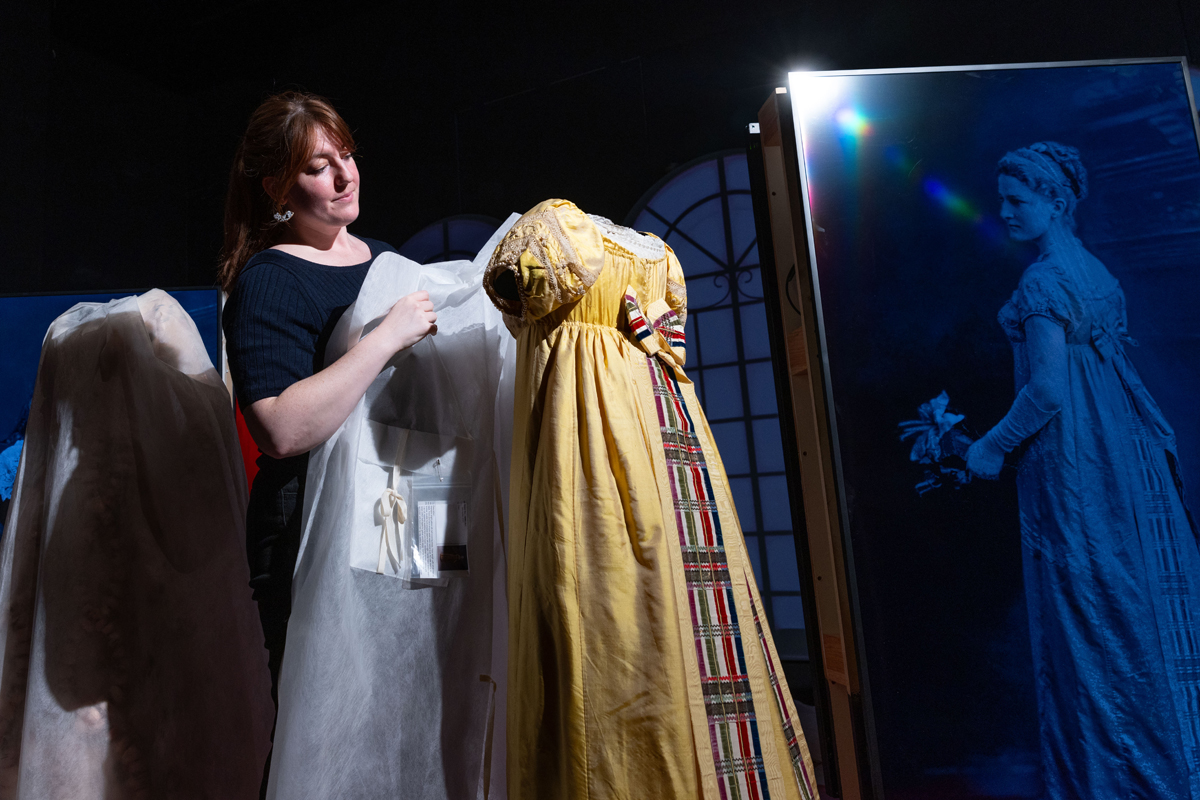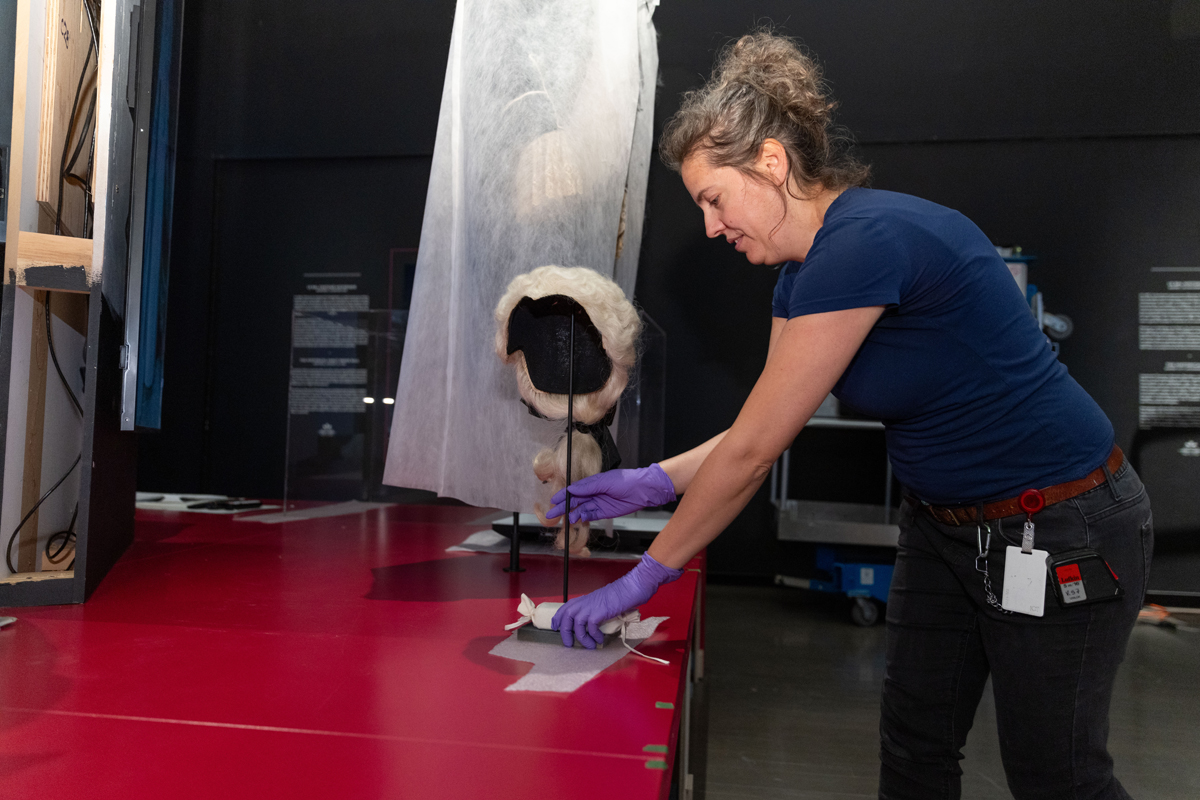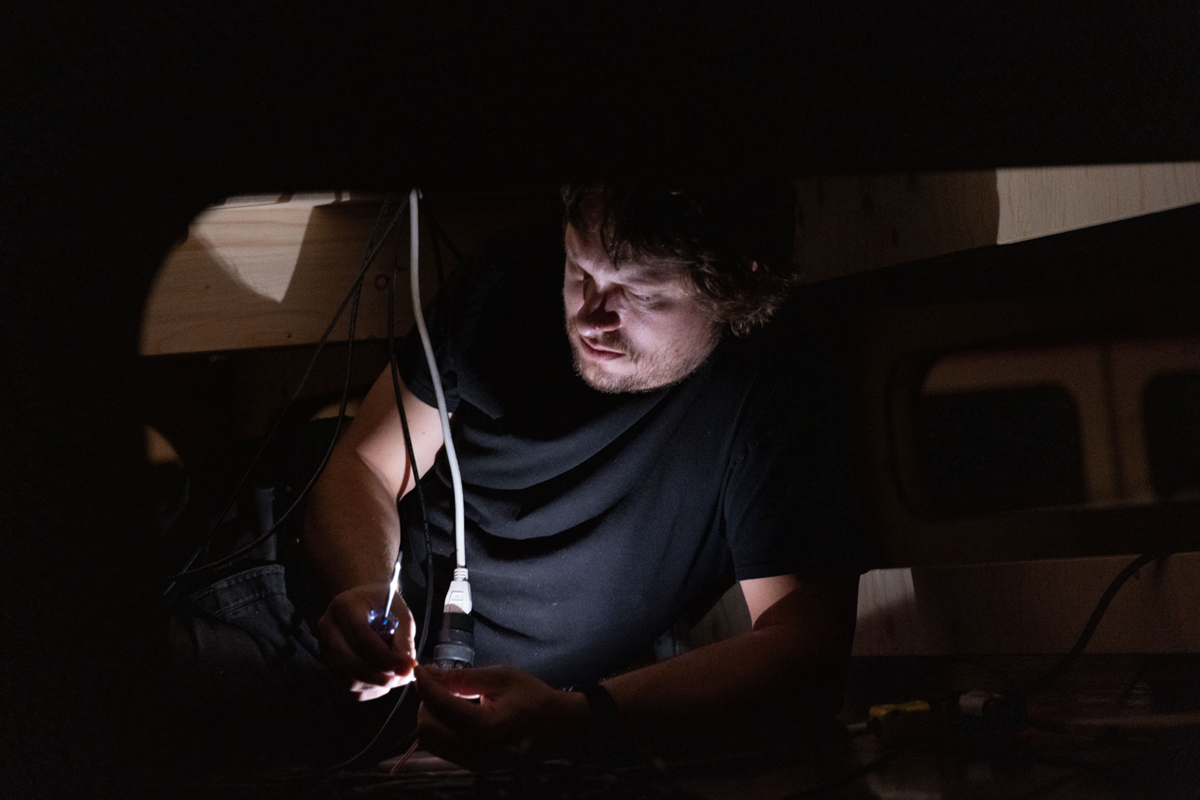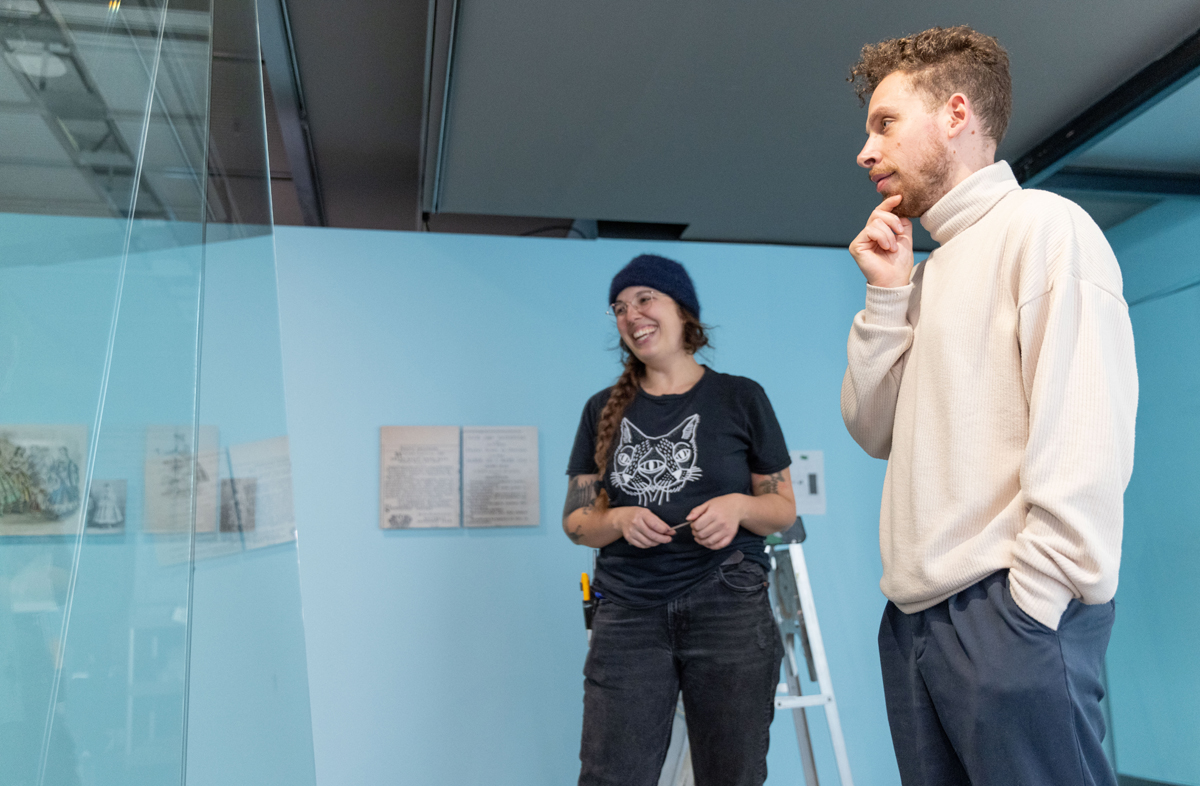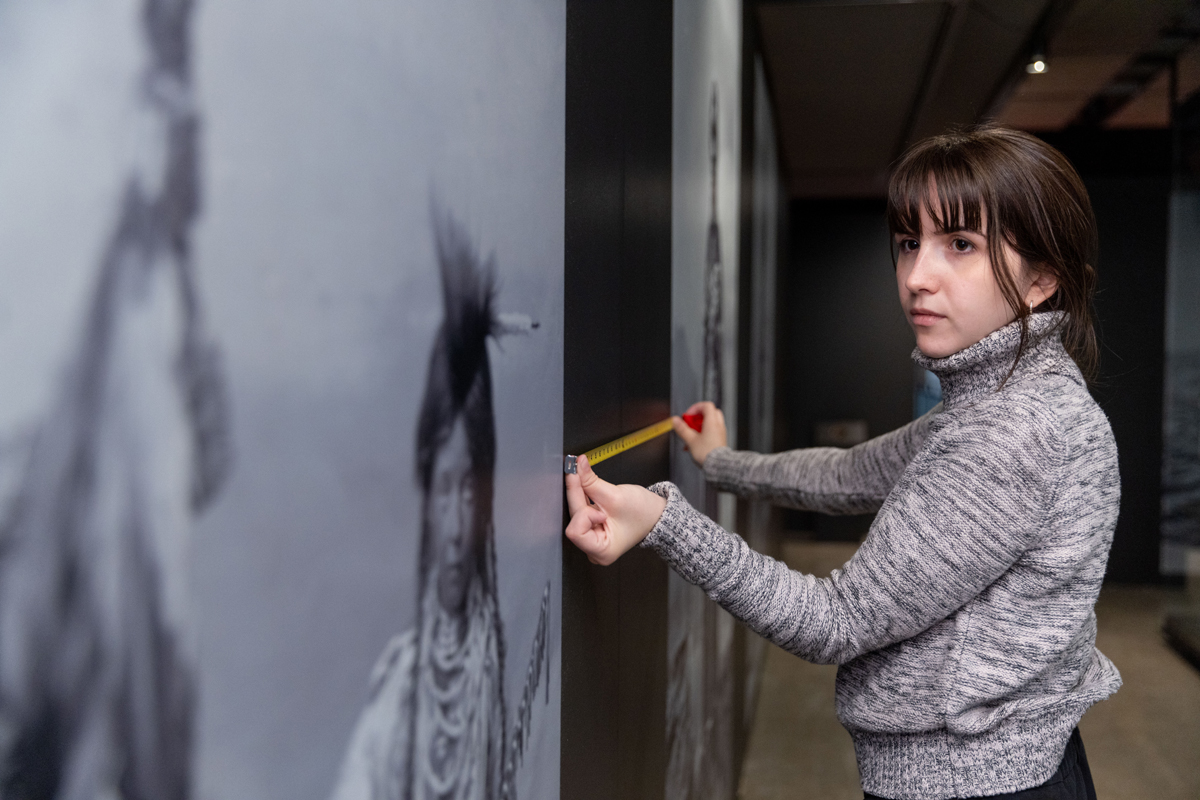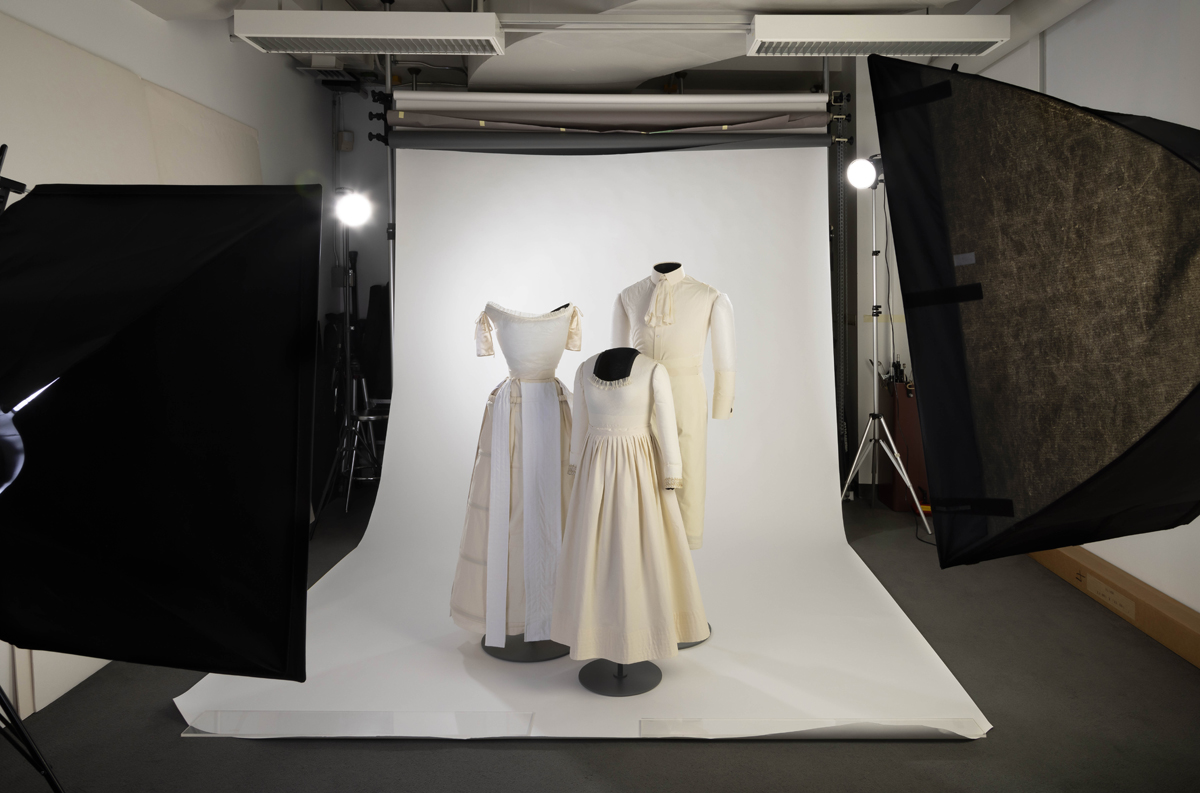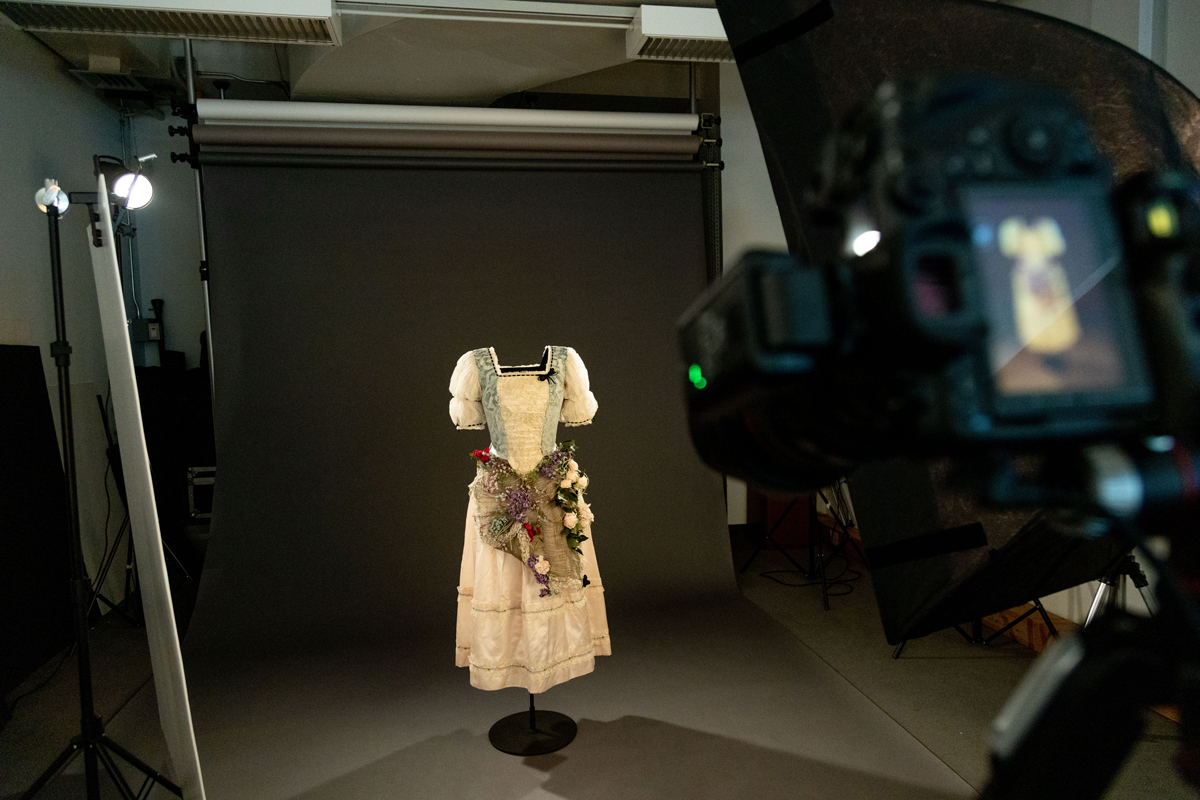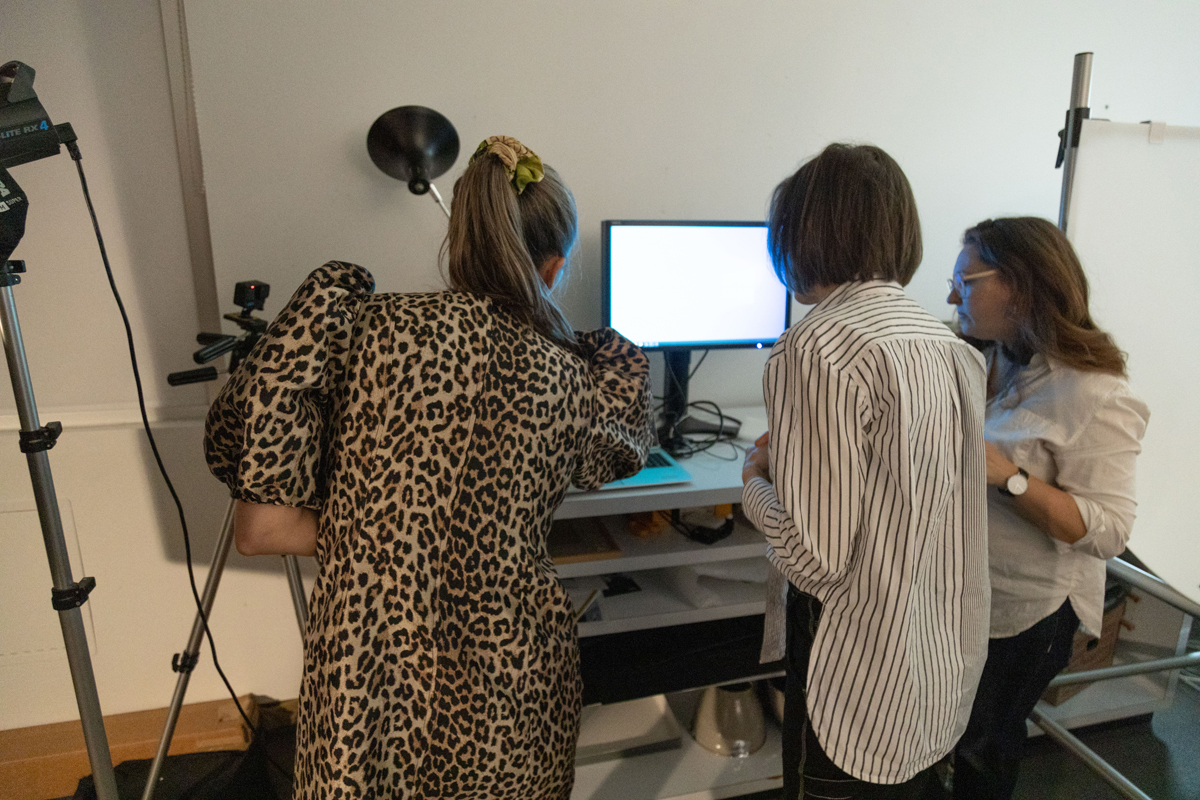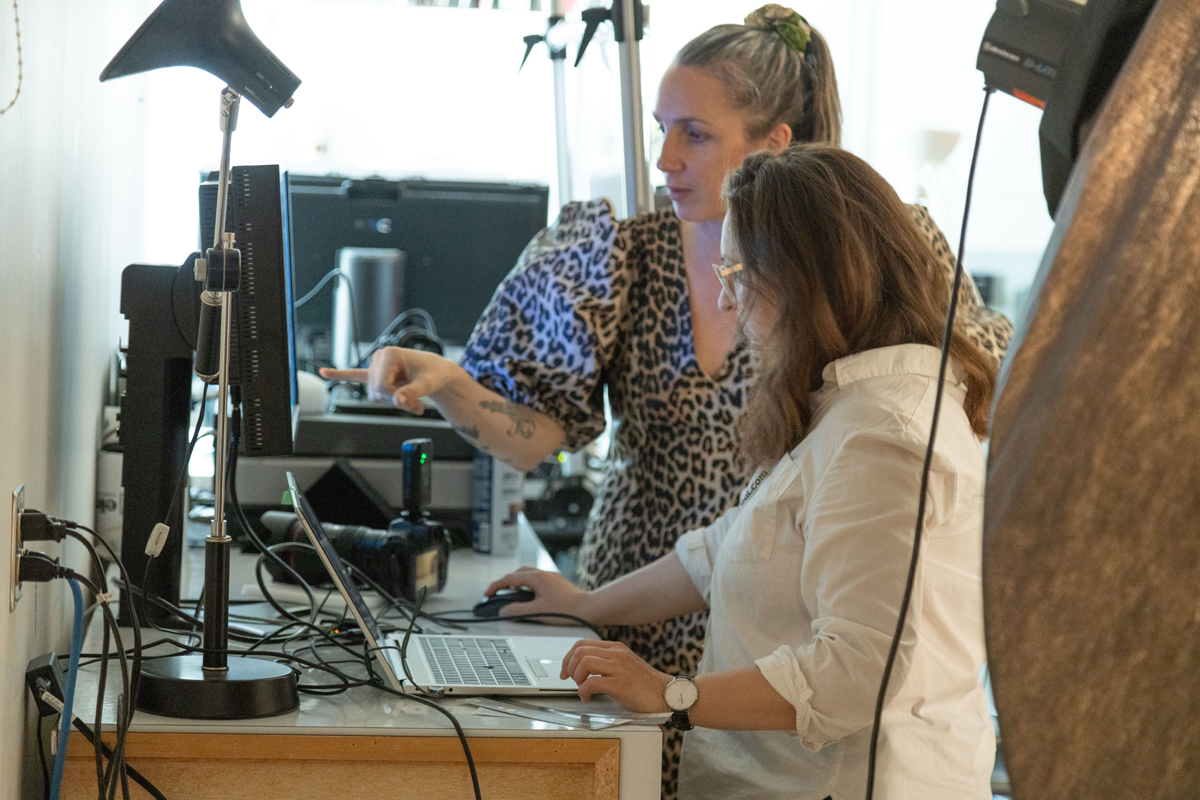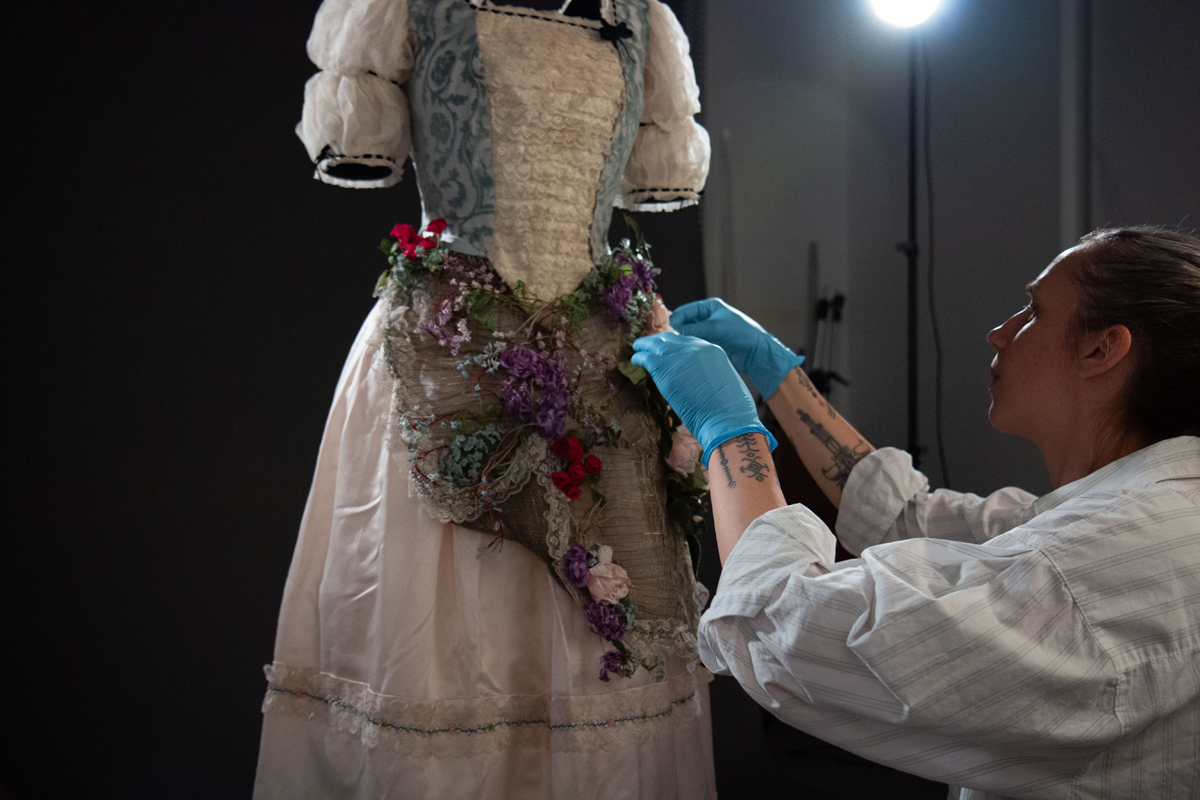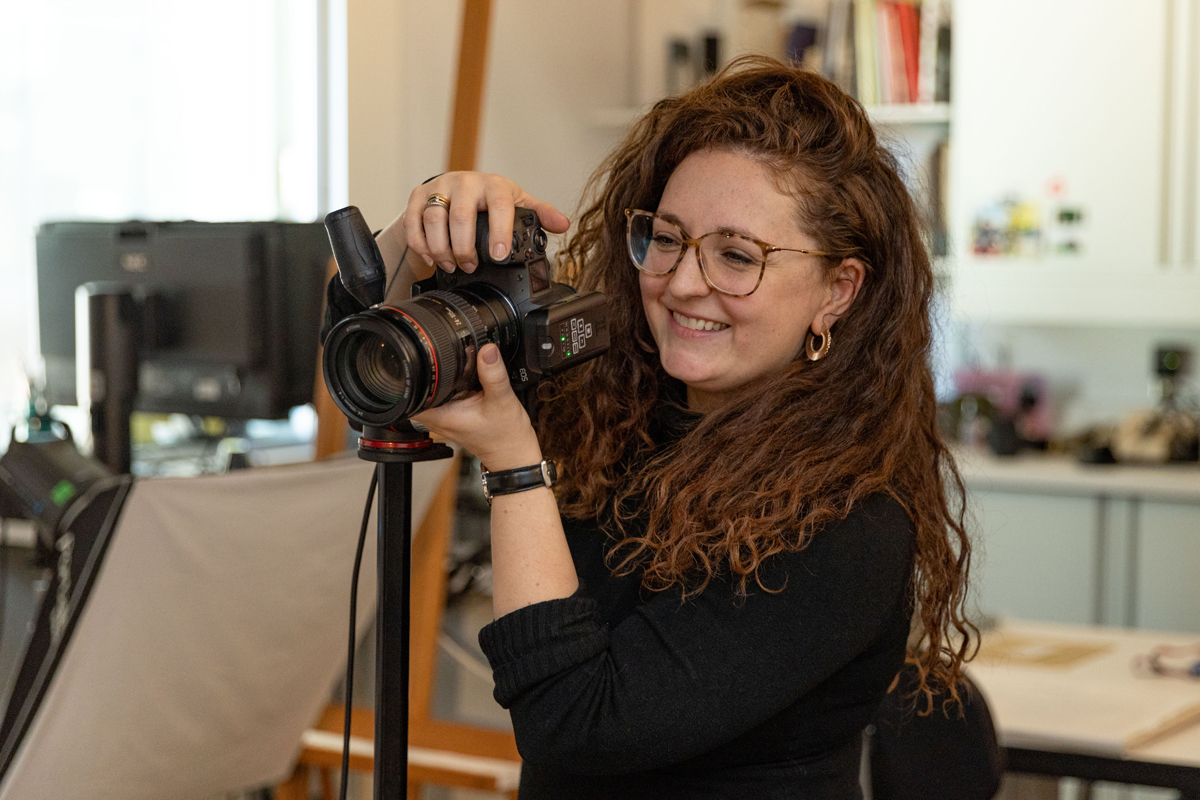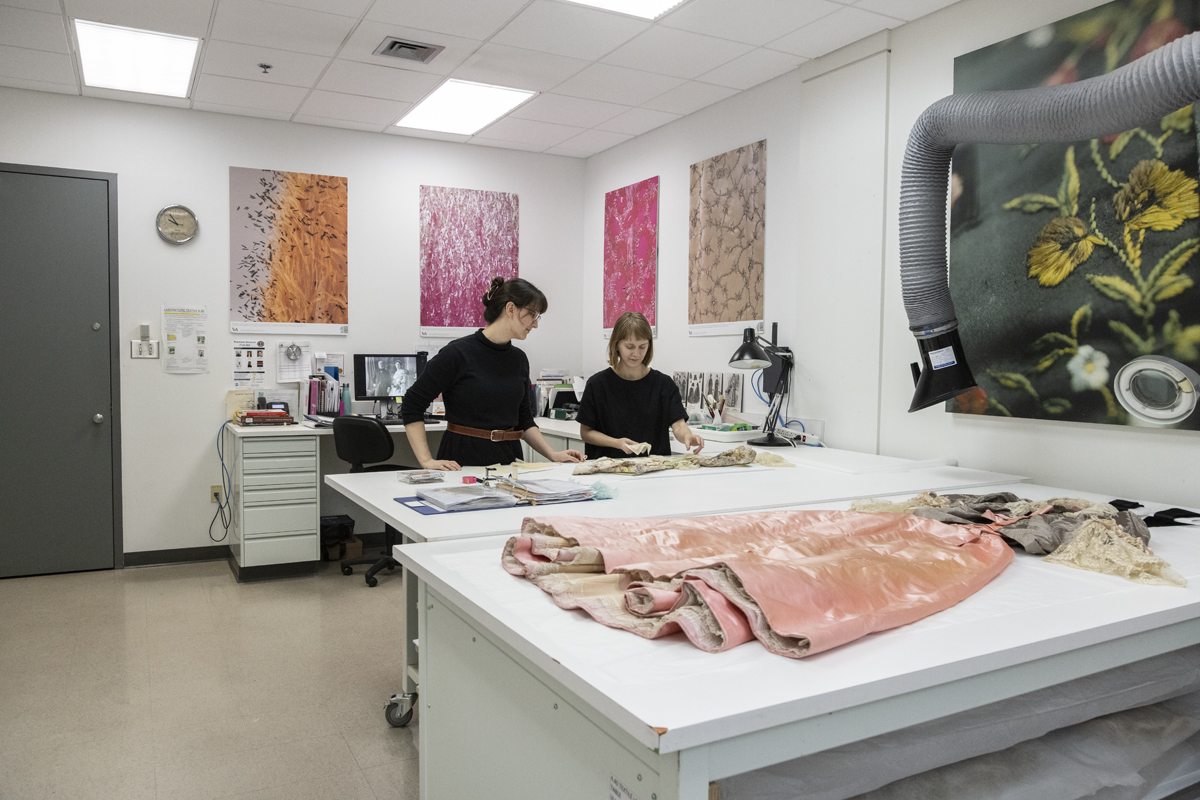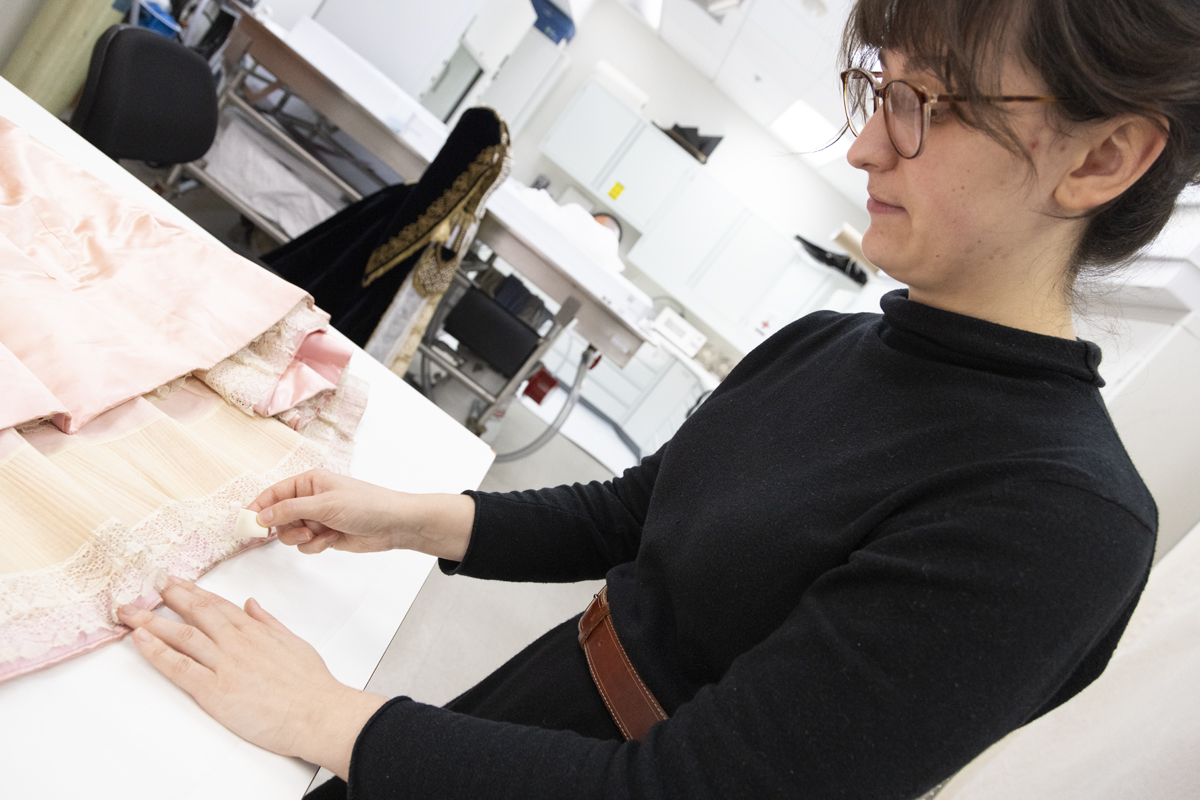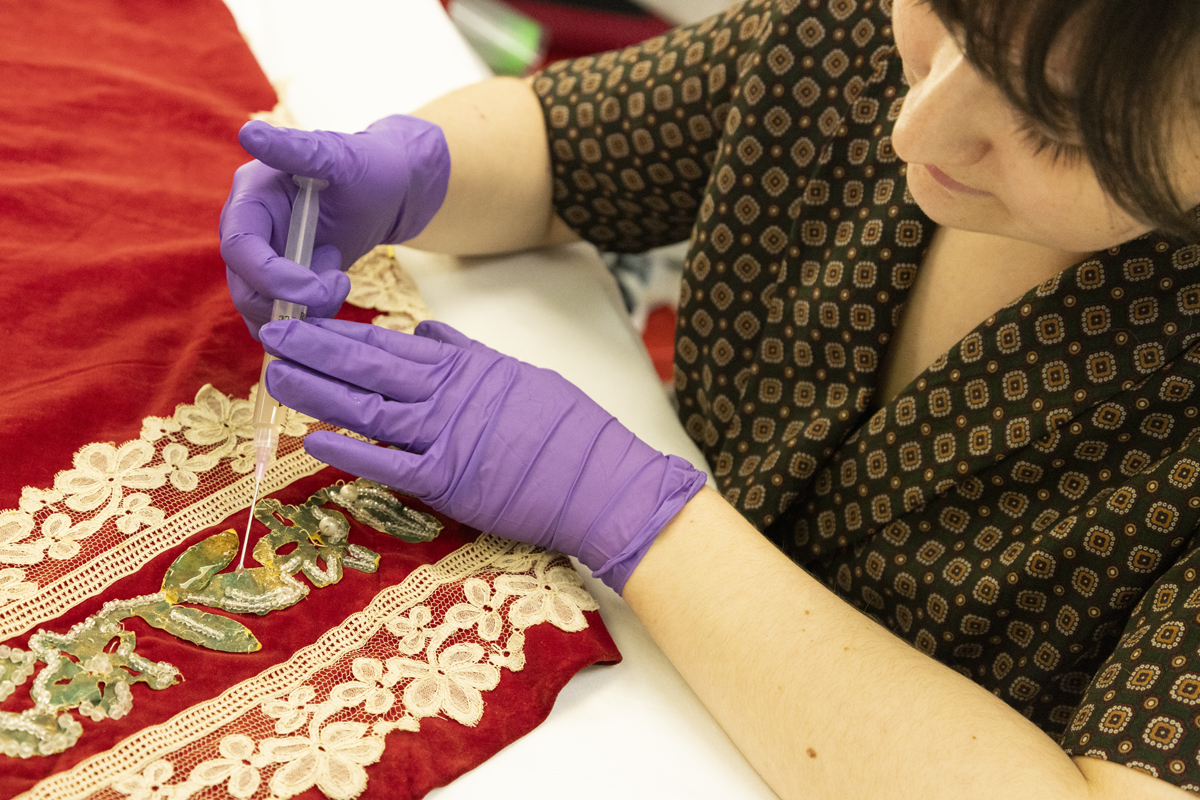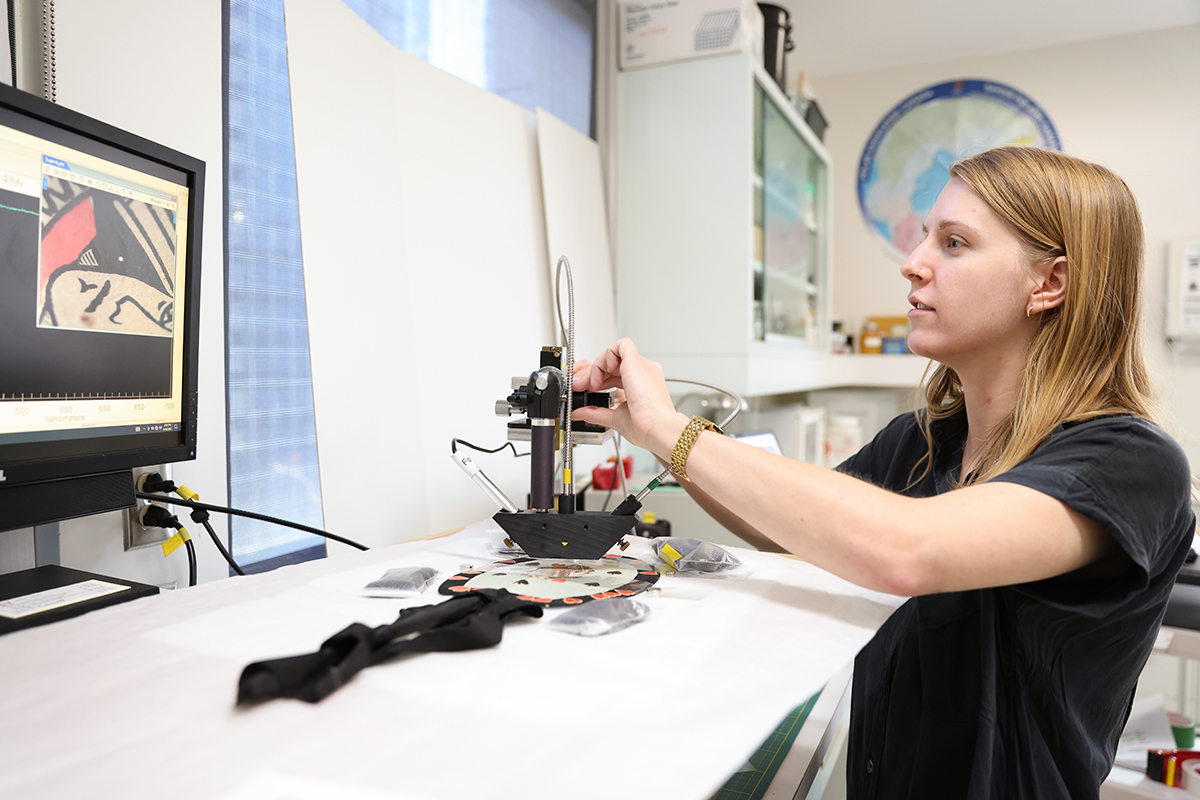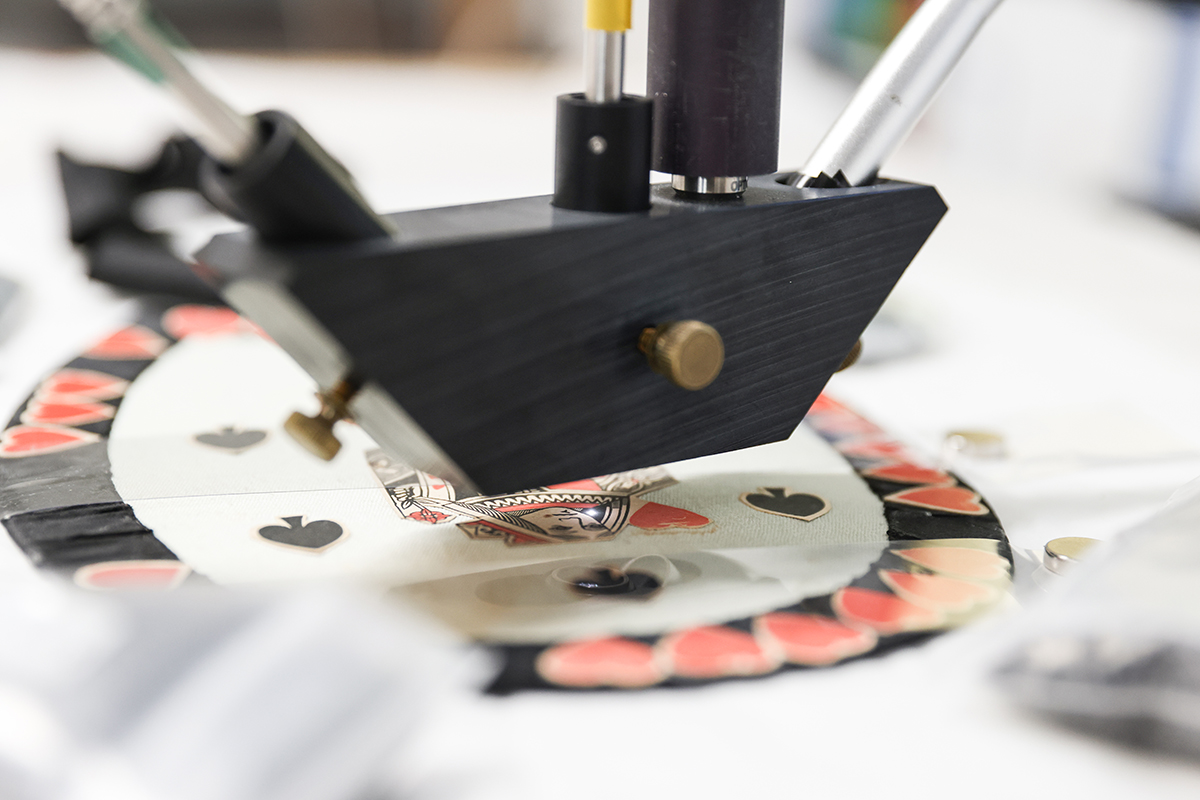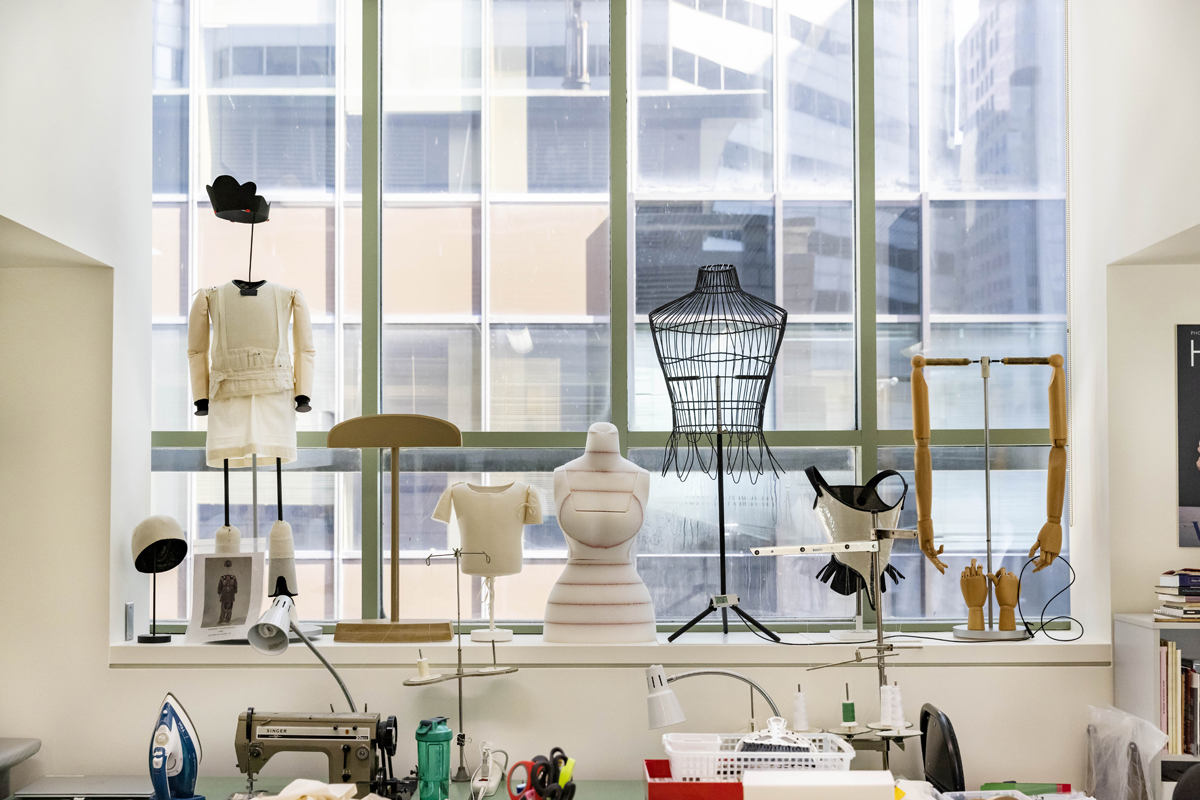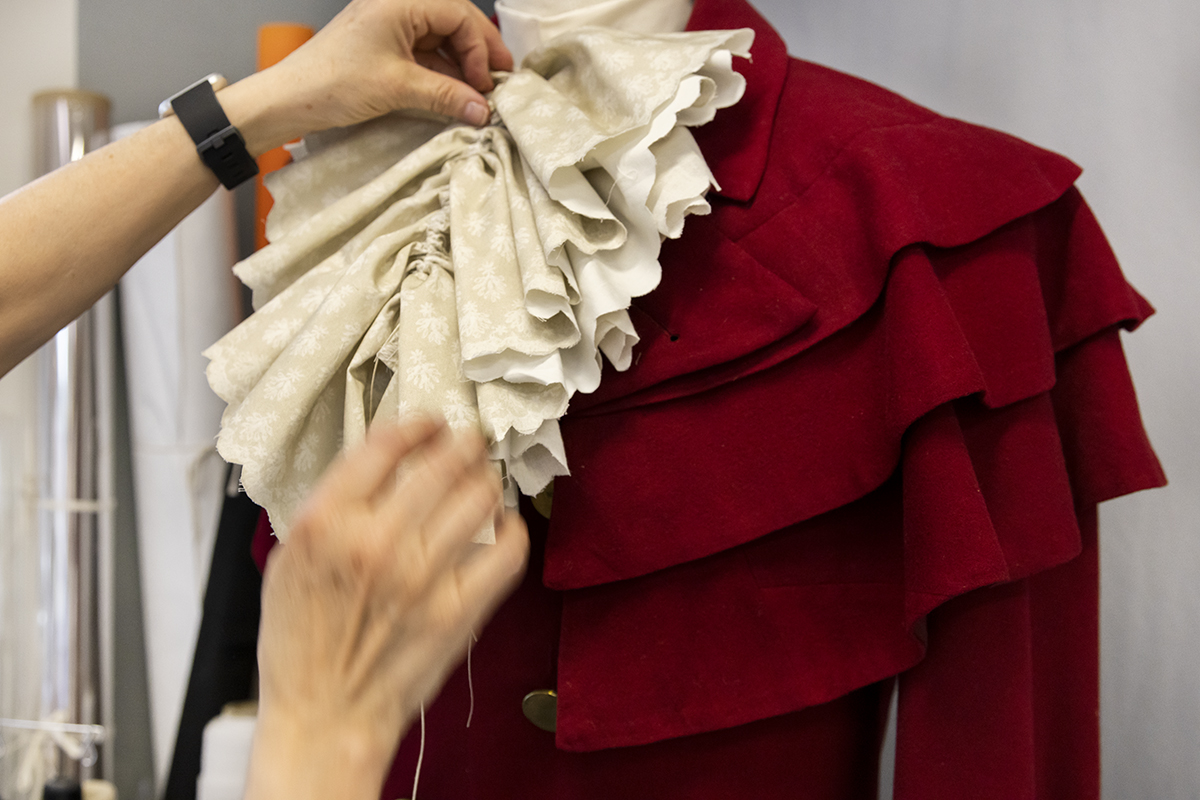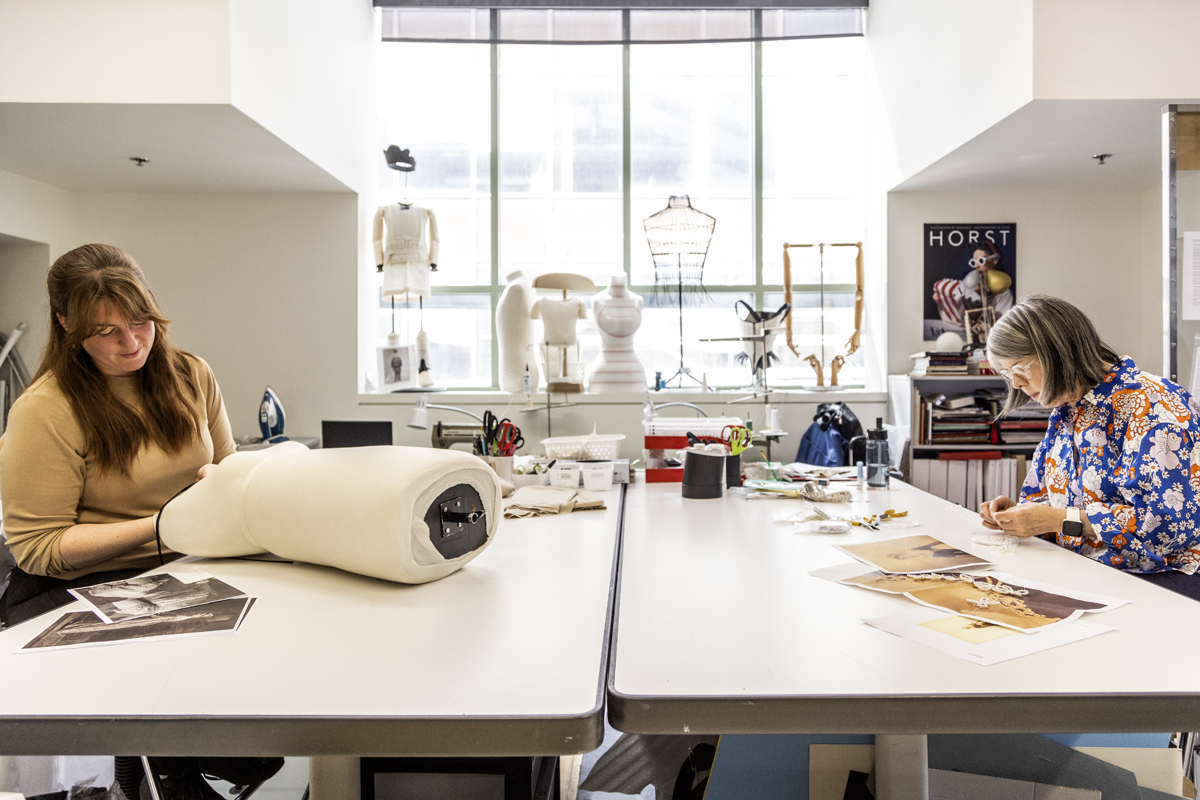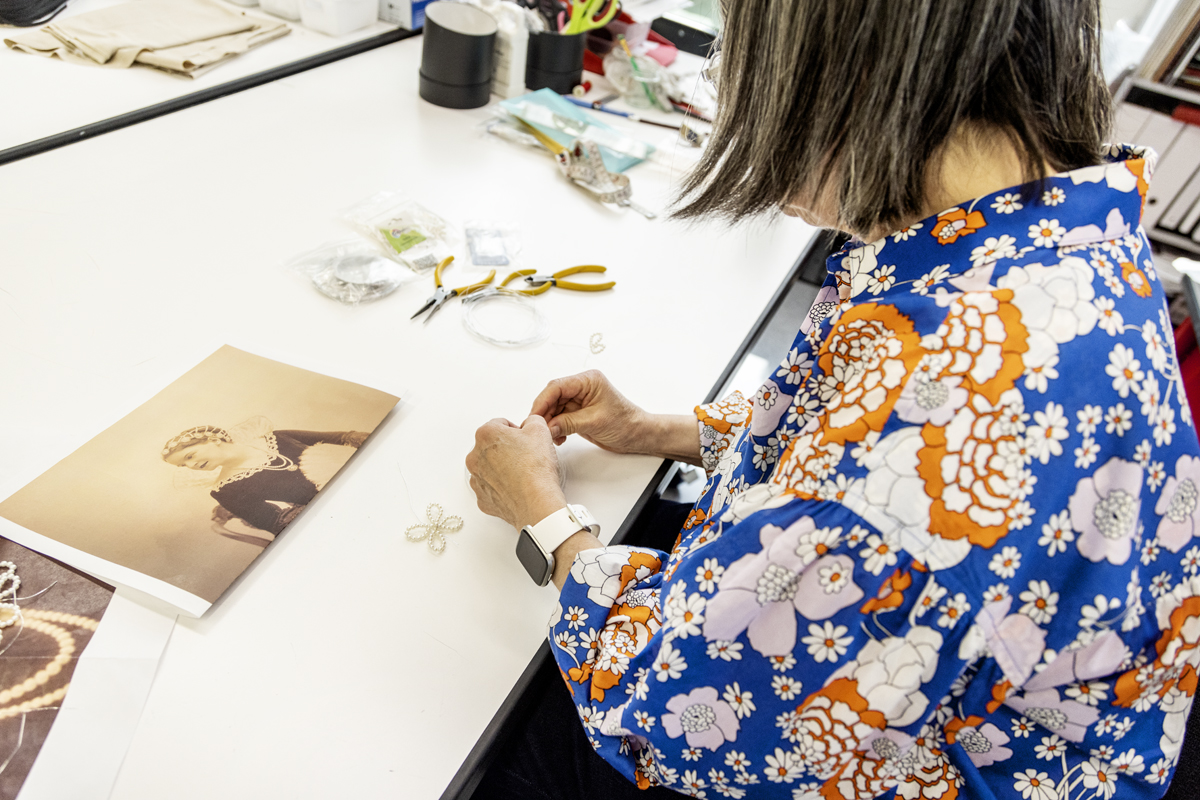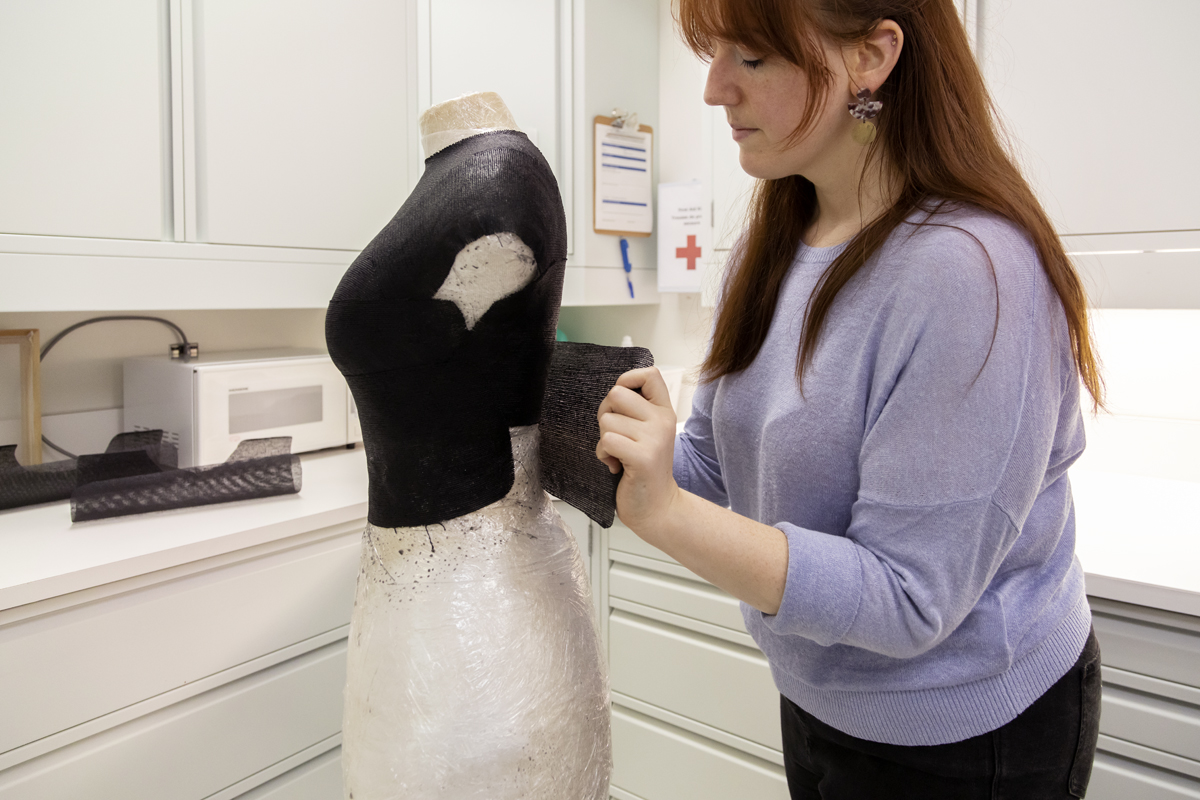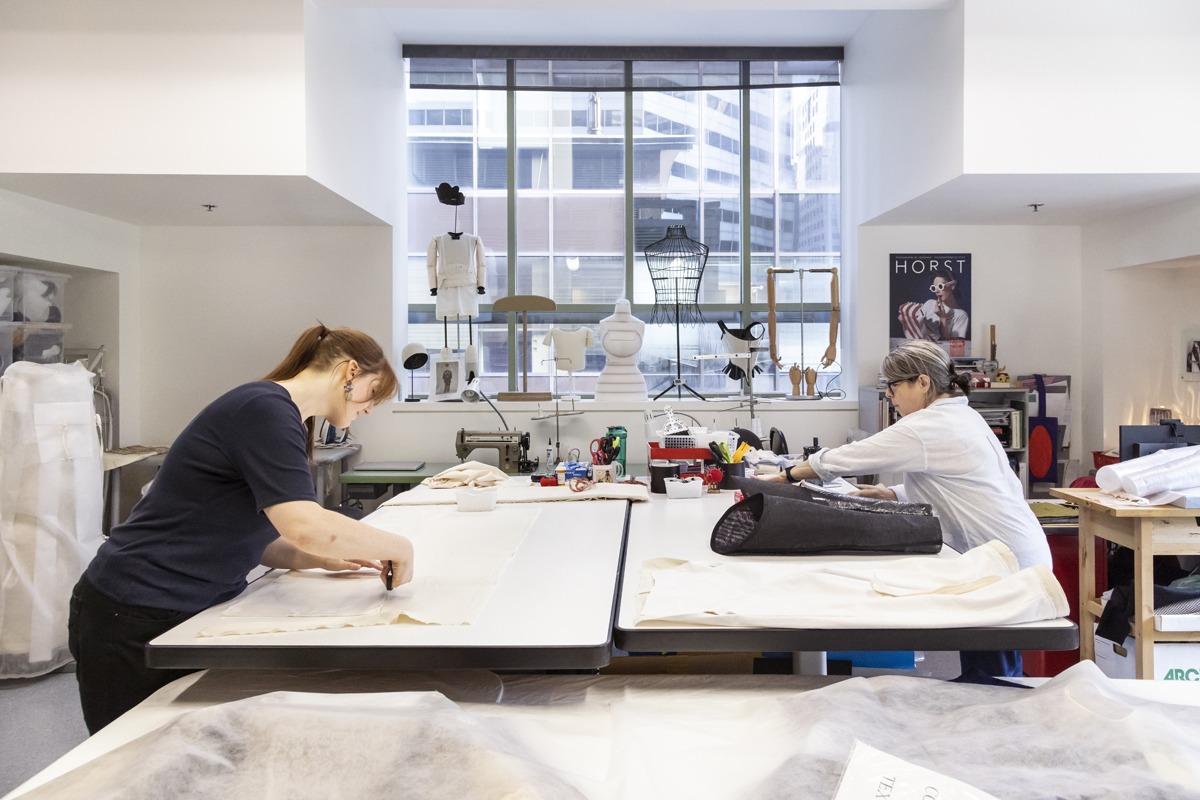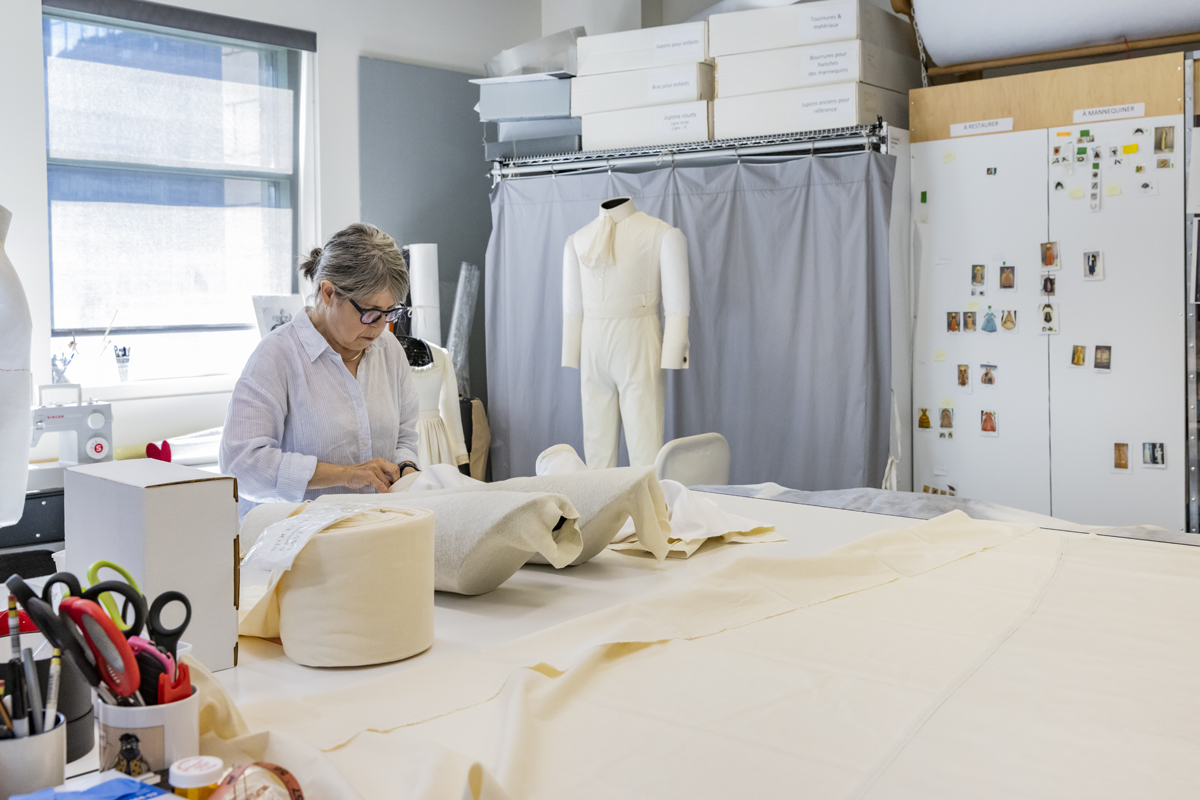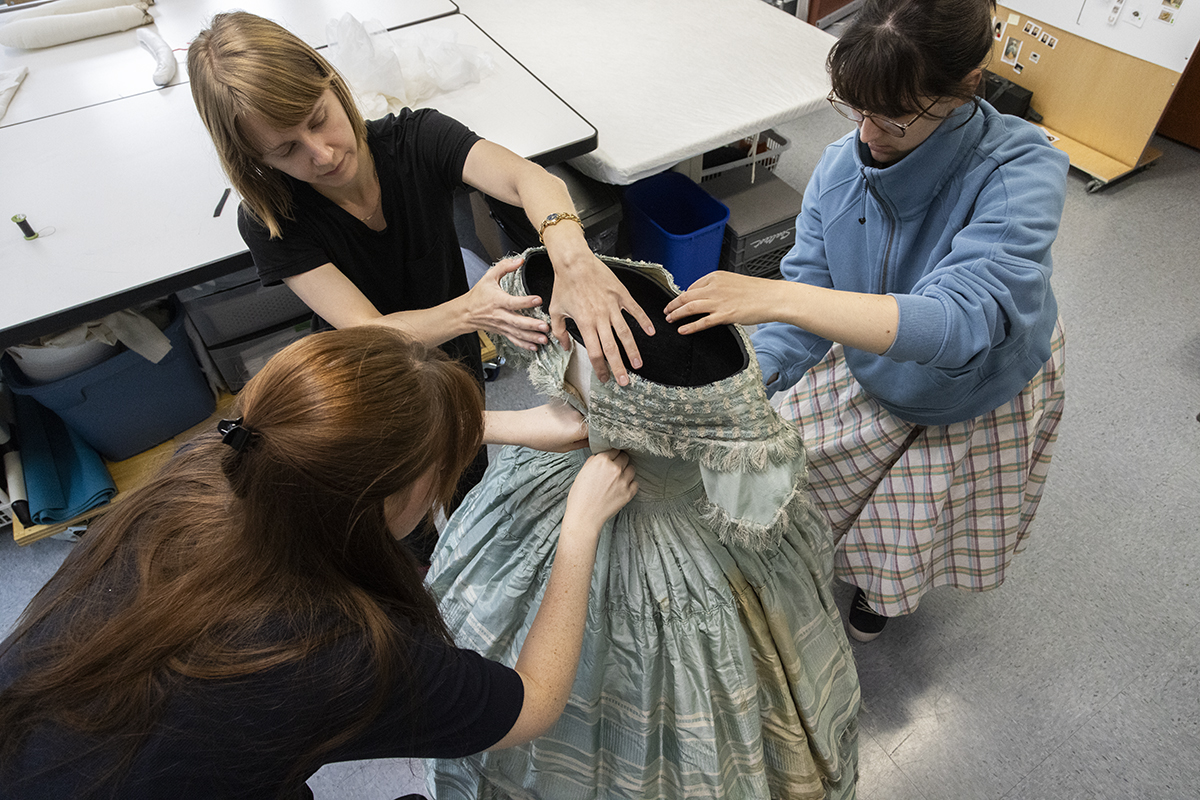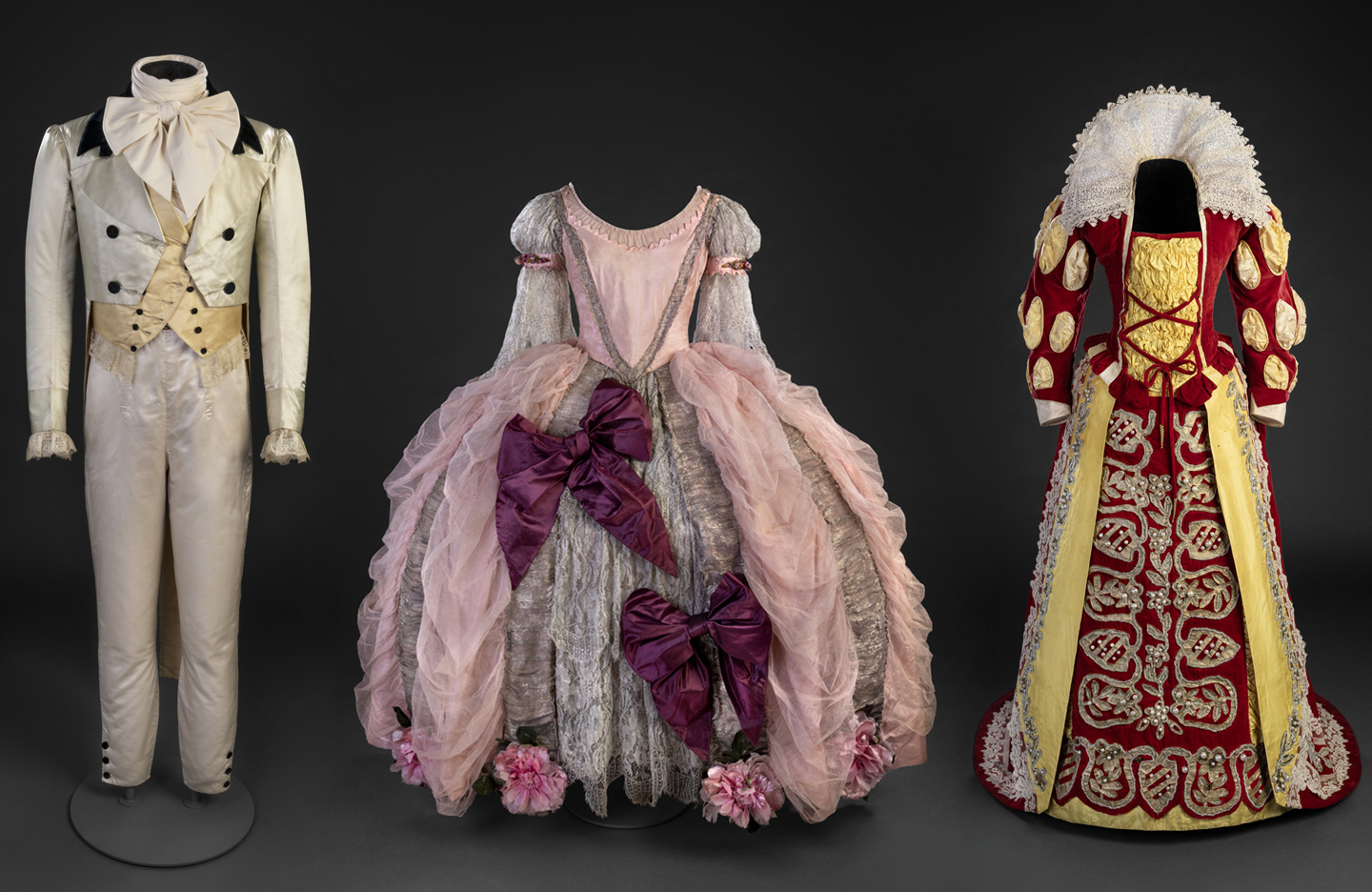
About the exhibition Costume Balls
Step into the world of the exhibition!
Creating the exhibition Costume Balls: Dressing Up History, 1870-1927 is the result of a monumental effort. Explore and meet the Museum's teams of experts and learn more about their work and their discoveries through blog articles, video interviews, behind-the-scenes photos, and much more!
Blog
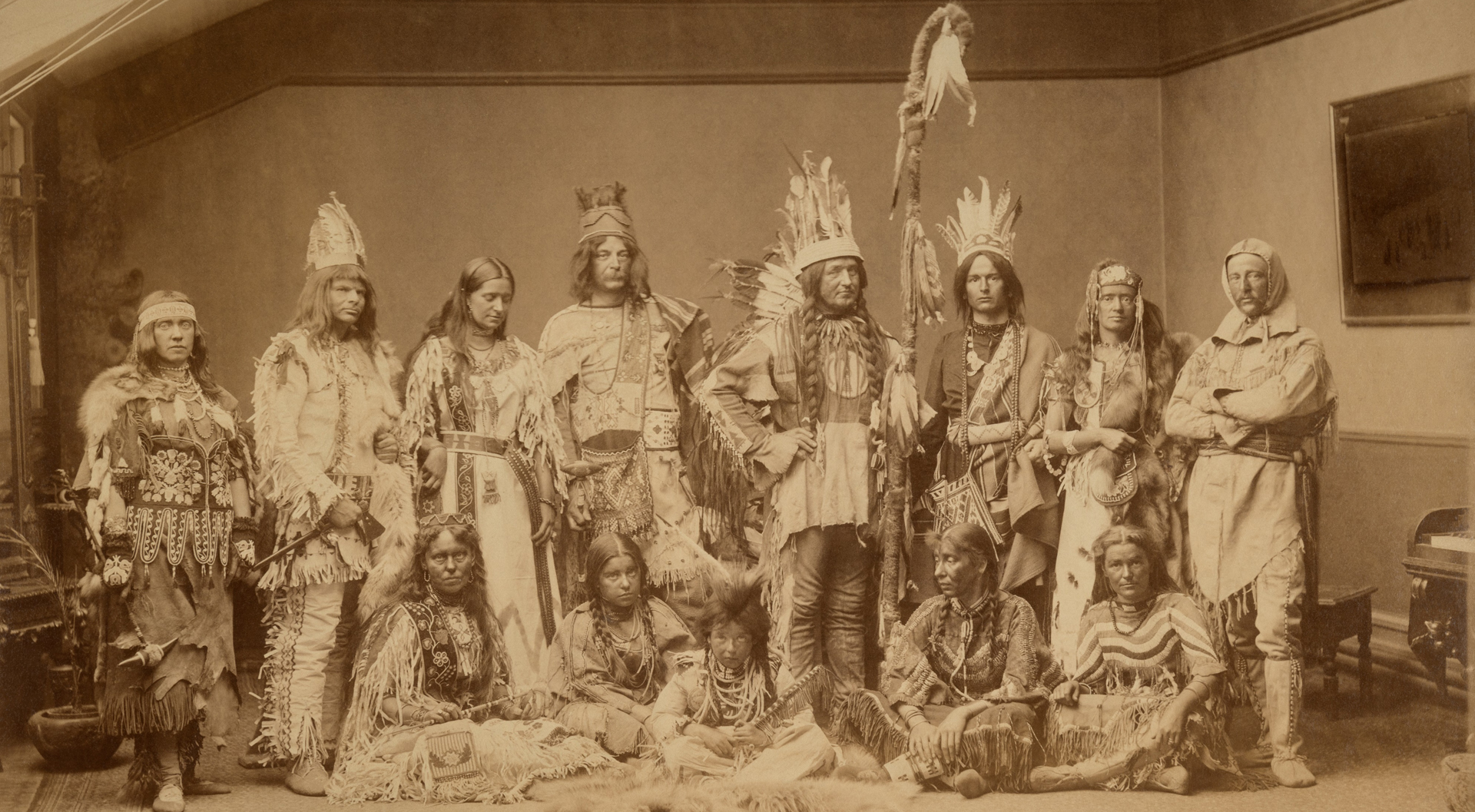
Impersonating Indigeneity
How in the late 19th and early 20th centuries, “Indian” impersonations embodied stereotypes, reflecting cultural appropriation and erasure.
Read article
Blog | Videos
Among all the treatments involved in restoring and mounting the costumes for the exhibition, the team shares with you the challenges and successes of this project.
Books in the exhibition
Guidebooks, fashion plates and picture books
Inspiration for characters and costumes came from a wide range of sources, including guidebooks offering encyclopedic lists of characters, descriptions of what to wear, and sometimes even patterns that could be purchased by mail order.
Souvenir publications
The efforts put into creating souvenirs of these events reveal their importance to those who organized and attended them. Souvenir publications were created for the balls that Lady Aberdeen organized in 1896 in Ottawa and 1897 in Toronto.
See the books
Inspiration for characters and costumes came from a wide range of sources, including guidebooks offering encyclopedic lists of characters, descriptions of what to wear, and sometimes even patterns that could be purchased by mail order.
Souvenir publications
The efforts put into creating souvenirs of these events reveal their importance to those who organized and attended them. Souvenir publications were created for the balls that Lady Aberdeen organized in 1896 in Ottawa and 1897 in Toronto.
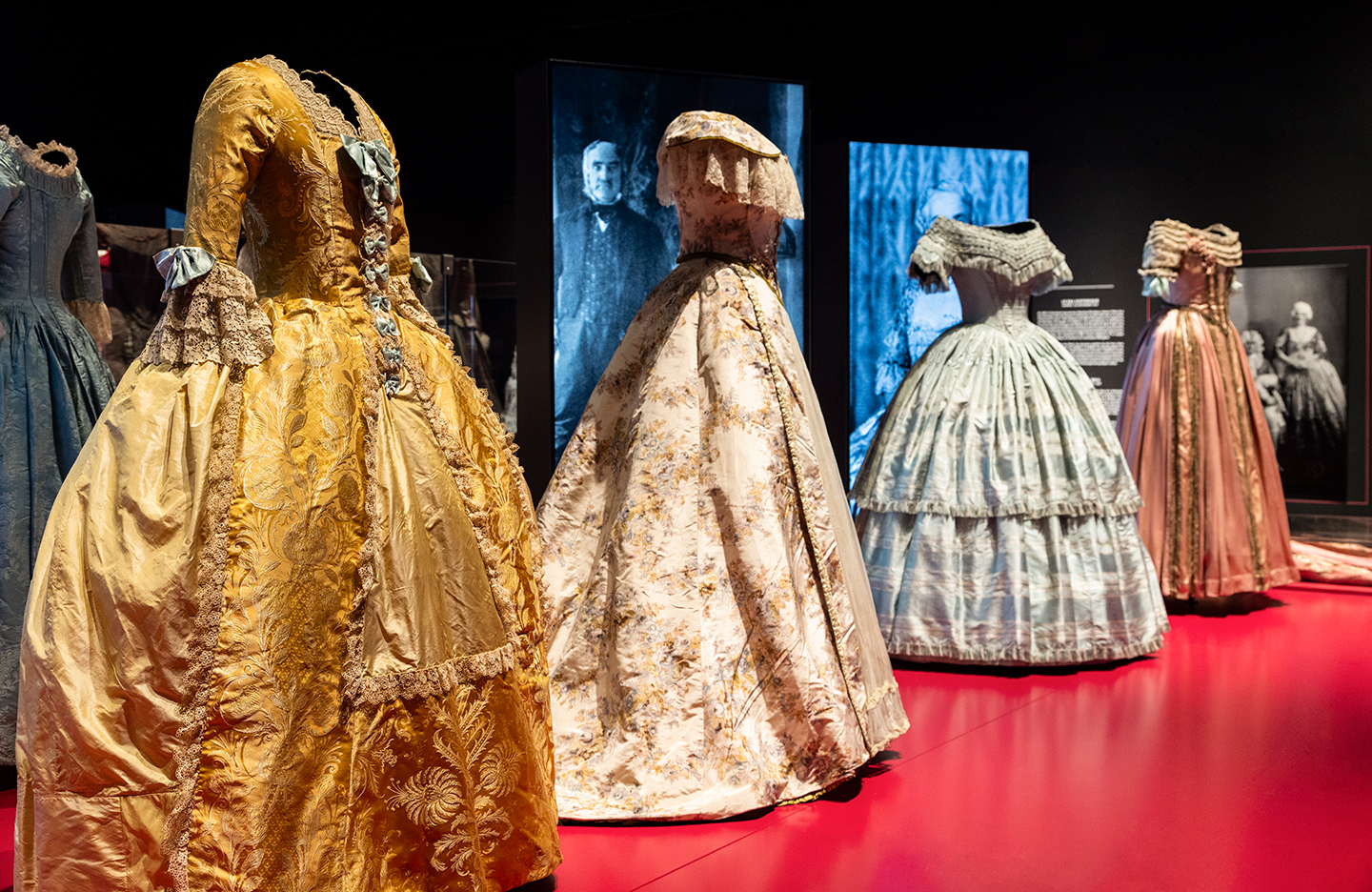
Costume Balls: The Symposium
The McCord Stewart Museum’s specialists, artists and authors share new learning derived from the full spectrum of the process of creating the exhibition, from the slow curatorial process of identification and analysis of the extant garments and visual culture, through the subsequent rethinking of our objectives, to addressing conservation interventions, to addressing historical injustices in impersonations of Indigeneity.
Keywords: Museology | Textile conservation | Material culture | Indigenous cultures | Costume history | Photography history | History of Canada and Quebec (19th century) | Exhibition curation.
Watch the recordings
Keywords: Museology | Textile conservation | Material culture | Indigenous cultures | Costume history | Photography history | History of Canada and Quebec (19th century) | Exhibition curation.
Conservation team
The exhibition gave the Conservation department an exceptionally complex and wide-reaching assignment. For a period of two years, a team of five people found themselves immersed in an environment where, almost daily, they were confronted with a complex garment or accessory that was most often made to last for a single evening, yet had survived for over a century. The ephemeral nature of the objects, the distinct character and history of each one, as well as the atypical abundance of archival sources are some of the aspects of this collaborative project that made it so enriching.
Caterina Florio | Head, Conservation
Caterina oversees the department’s active treatment program, facilitates the display of the collection and plans its preservation. With a strong interest in how museums function and what they can achieve, she is committed to the wider relevance of conservation as regards both museum practices and society outside the lab.
Caroline Bourgeois | Conservation Assistant
In accordance with the strictest museum standards, Caroline has developed special expertise in the design and creation of mannequins and mounts for historic and contemporary clothing in the Dress, Fashion and Textiles and Indigenous Cultures collections.
Sonia Kata | Conservator
With a master’s in Art Conservation, Sonia appreciates the opportunity to work with cultural heritage in a tangible way. Although she treats a variety of historic objects at the Museum, as an avid sewer, she has a particular interest in costumes and textiles.
Amelia Desjardins | Conservation Technician
Specializing in costume mounting affords Amelia the unique opportunity to combine her passion for fashion history with practical experience in costume making. Drawn to object biographies, she delights in becoming part of their journey by safely presenting them in their best light through the creation of custom mannequins and mounts.
Camille Lafrance | Conservator
Camille holds a bachelor's degree in historical science and heritage studies from Université Laval in Quebec City and a master's degree in textile conservation from the University of Glasgow in Scotland. With this project, she was able to apply all the skills gained during her training in a professional setting.
Online Collections
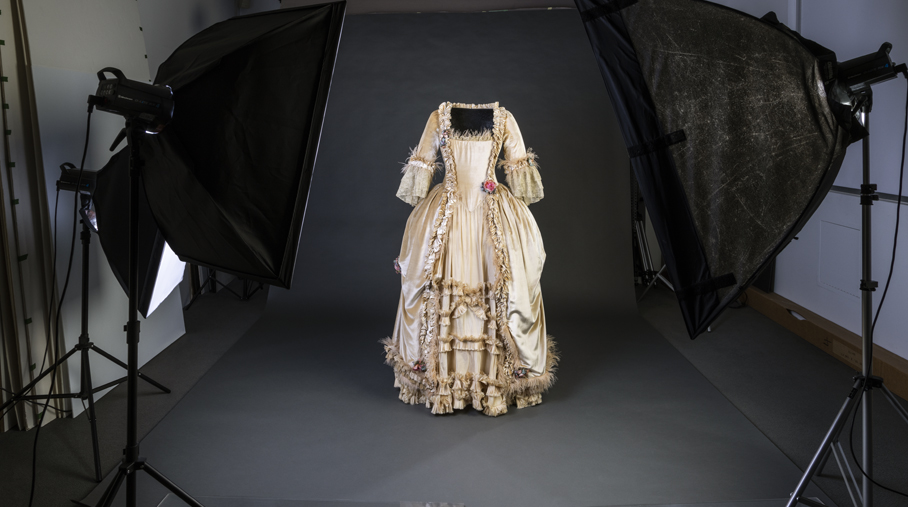
Assembled over the past century, the Museum’s vast collections are an extraordinary trove of visual, material and print culture. Conspicuously overrepresented within this historical record are images, garments, documents, ephemera and other objects that bear witness to lavish costume balls and skating carnivals held in the late nineteenth and early twentieth Centuries.
Explore the objects
Why don't we always wear gloves?
Before handling objects, conservators have to take a lot of things into account. The decision to wear gloves–or not–is based on an object's material composition, its condition, history, and any past conservation treatments. Textile conservators, for instance, sometimes choose not to wear gloves when handling costumes. Instead, they prefer to work with clean, dry hands, as gloves can reduce dexterity and diminish the tactile sensitivity needed to assess the condition and stability of textiles.
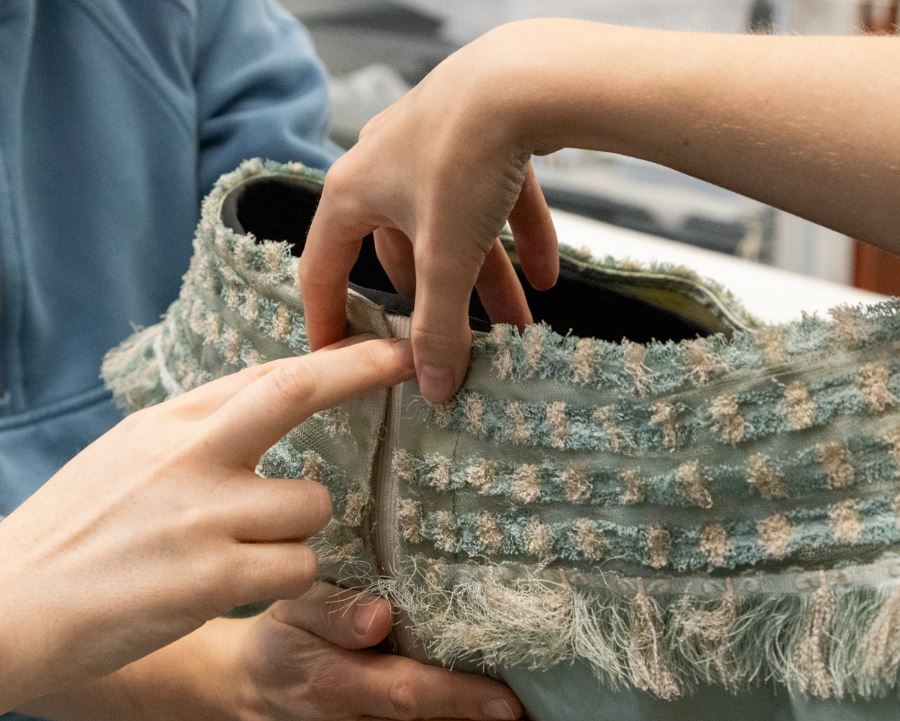
The team in action!
McCord Stewart Discoveries
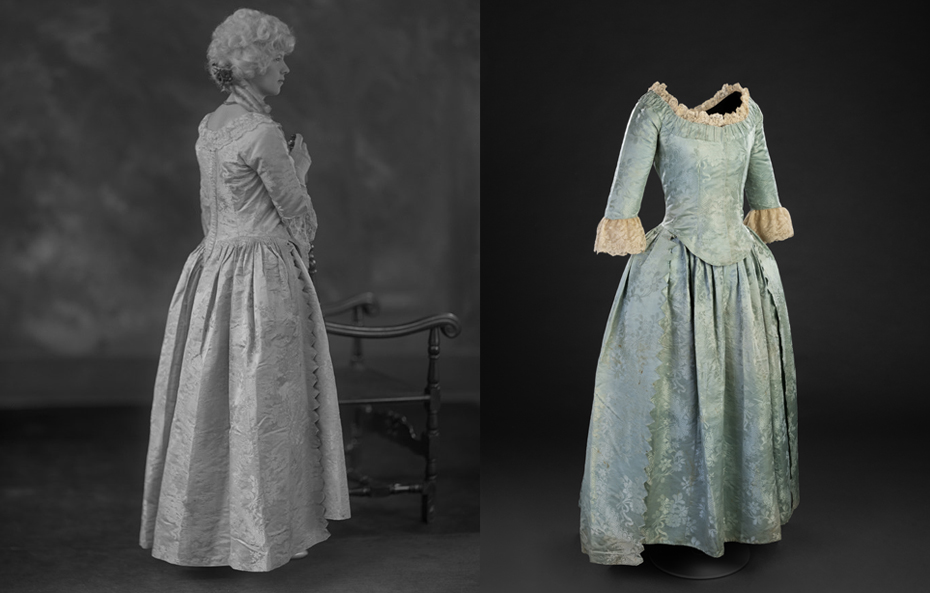
Play video
Threads of Black Emancipation in an Eighteenth-Century Dress
A photograph of a young woman wearing her ancestor’s dress for a 1927 costume ball led to the unlikely discovery of the garment in a Laurentians cottage in 2022.
Watch video

